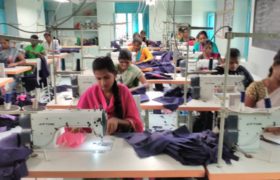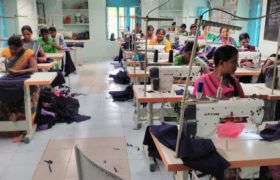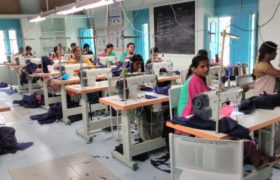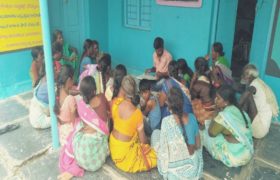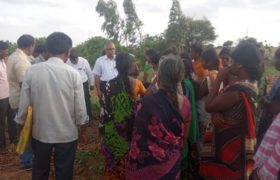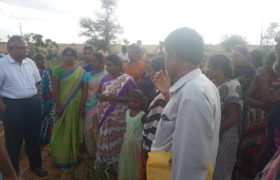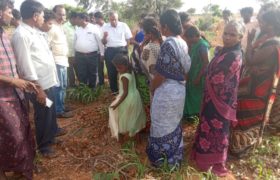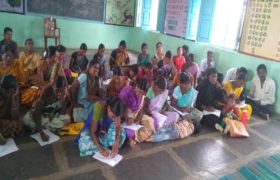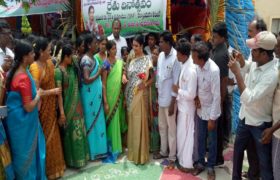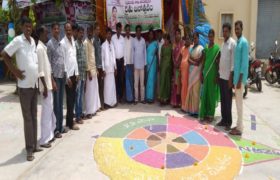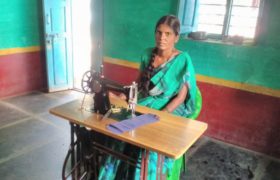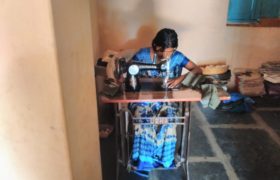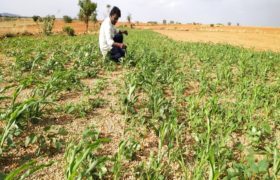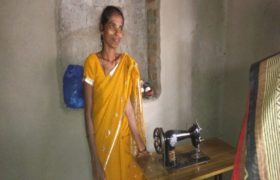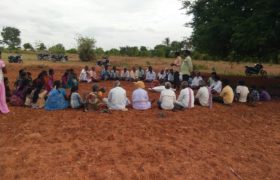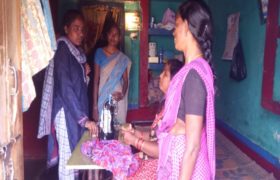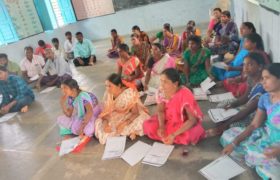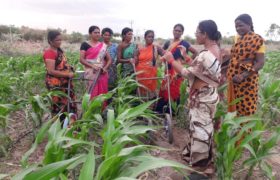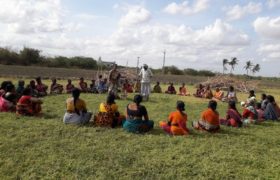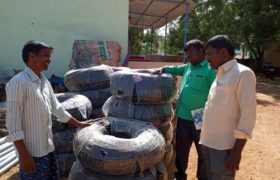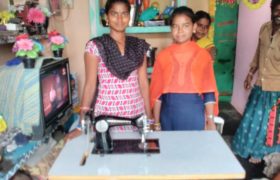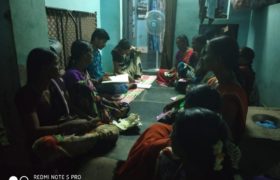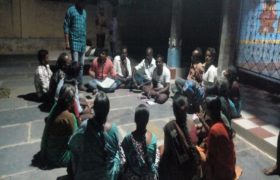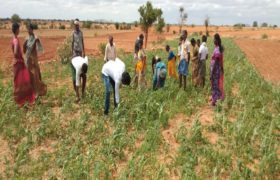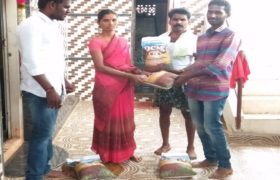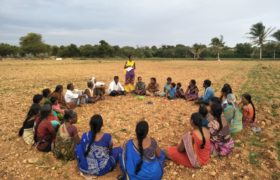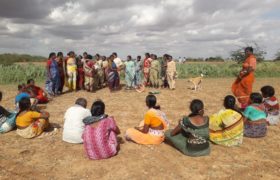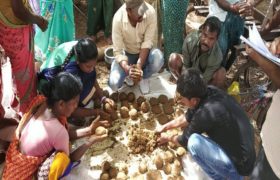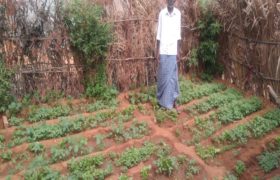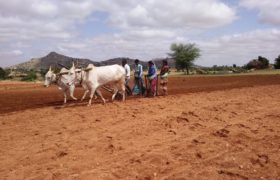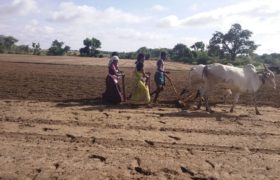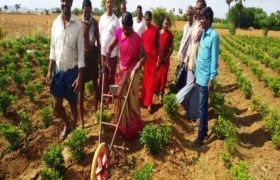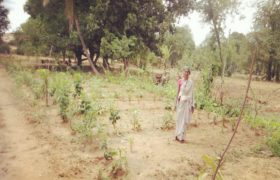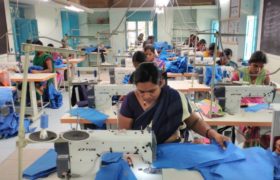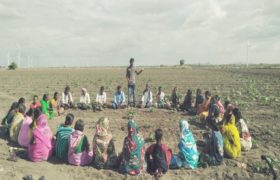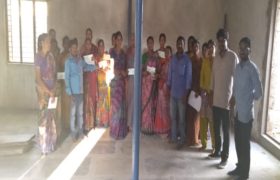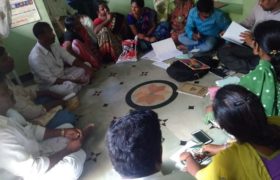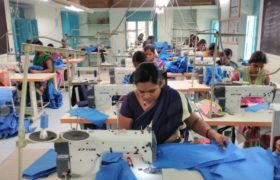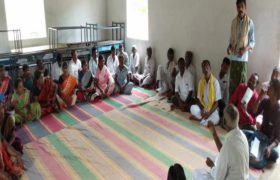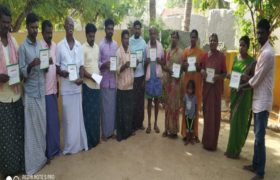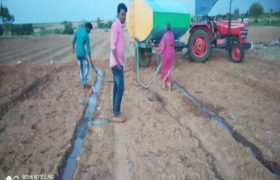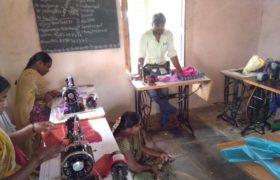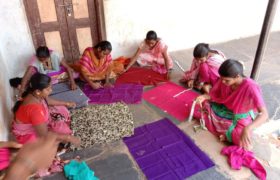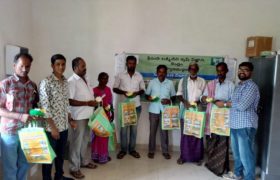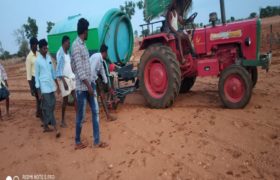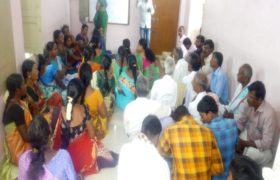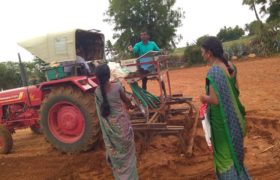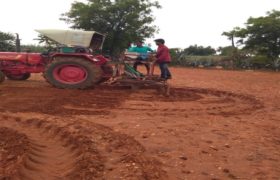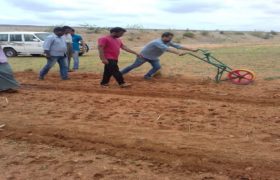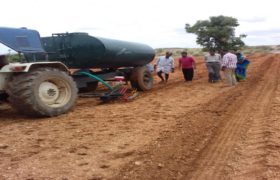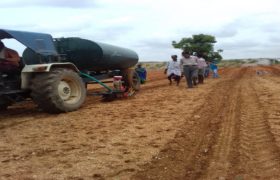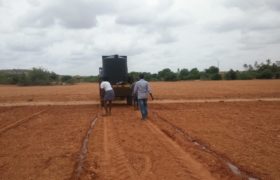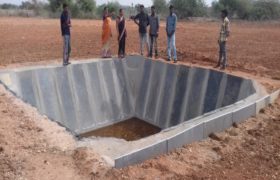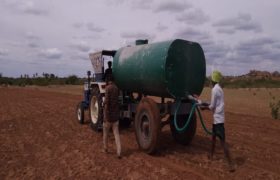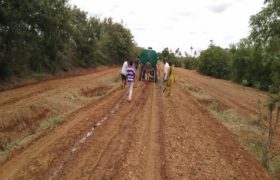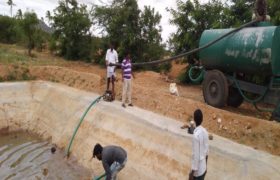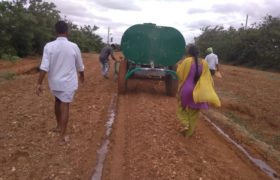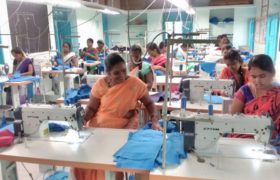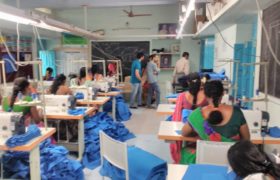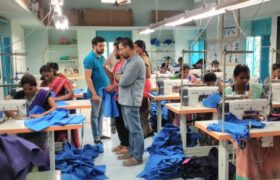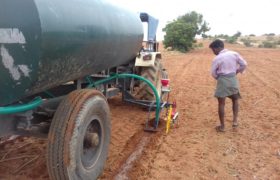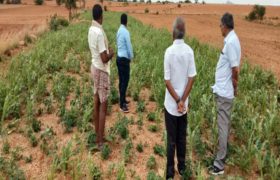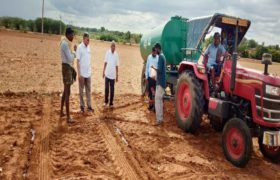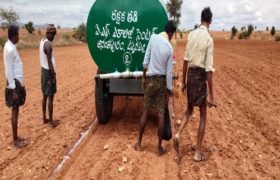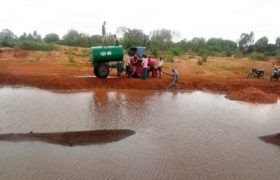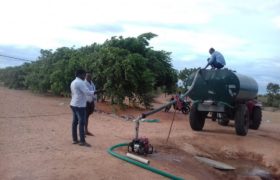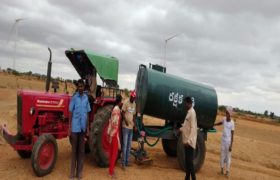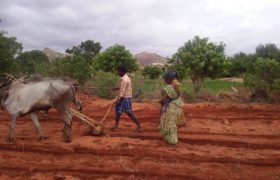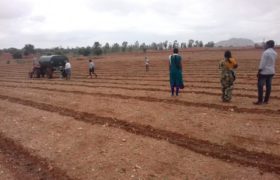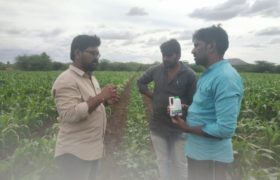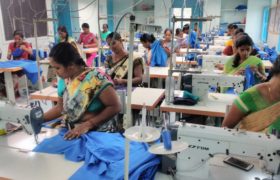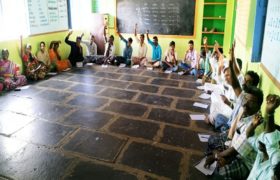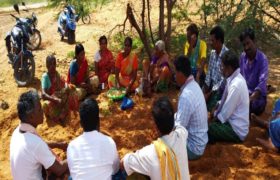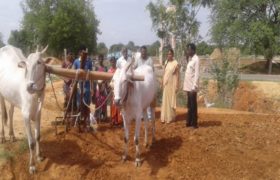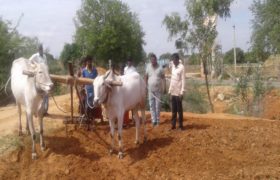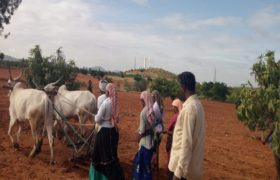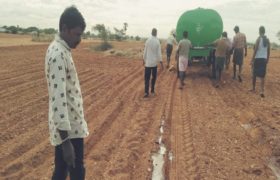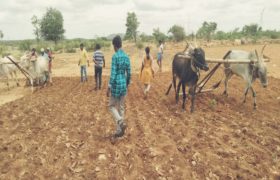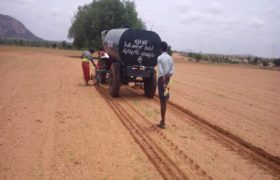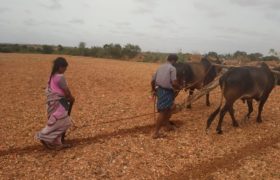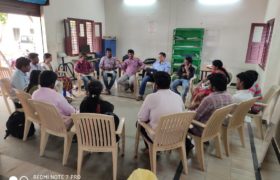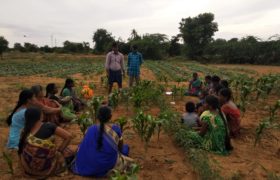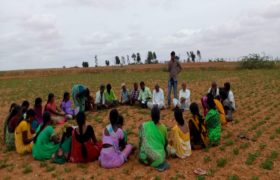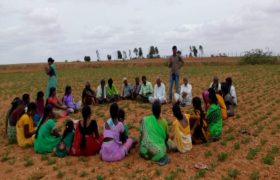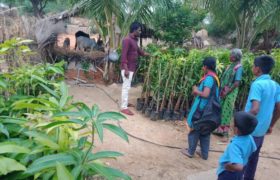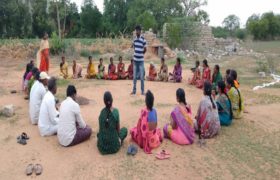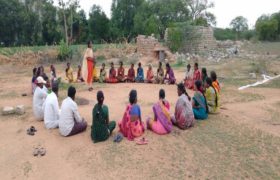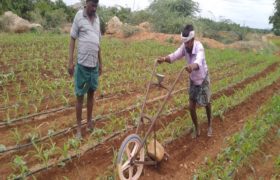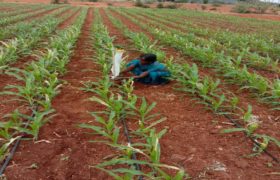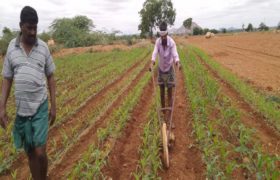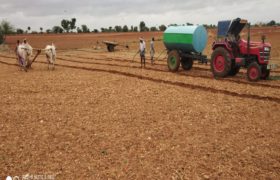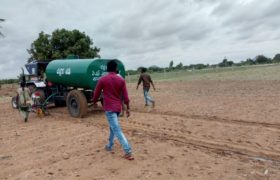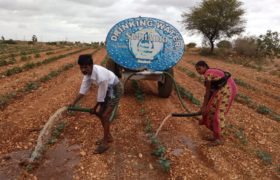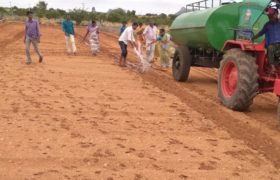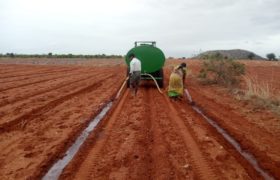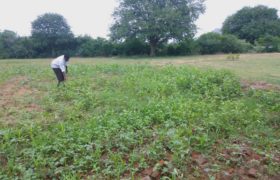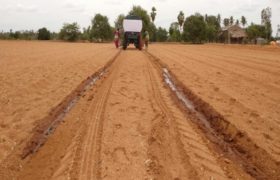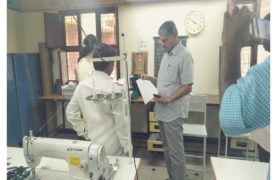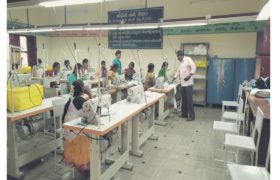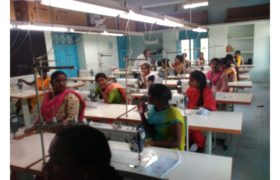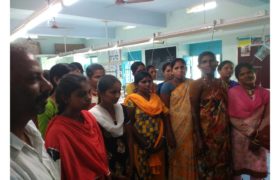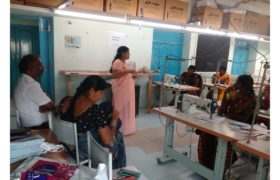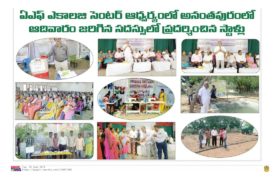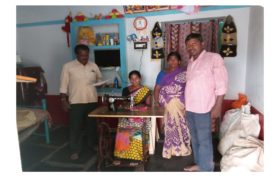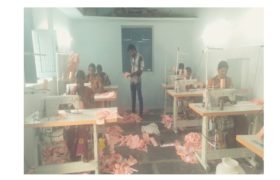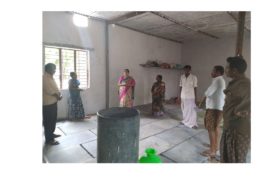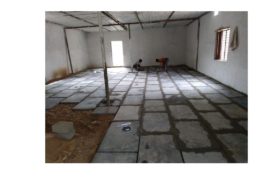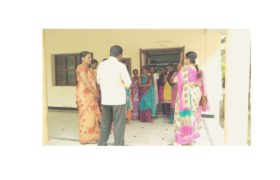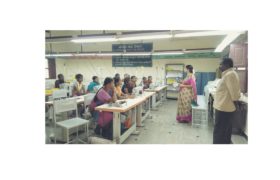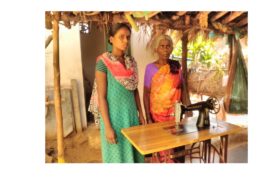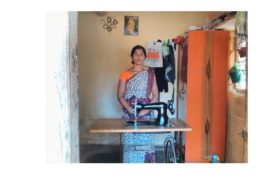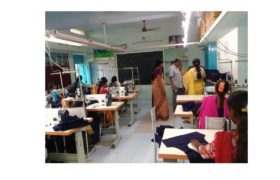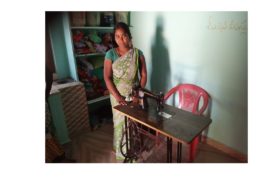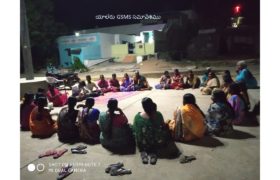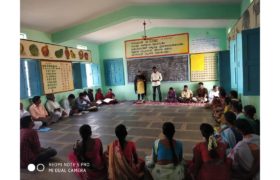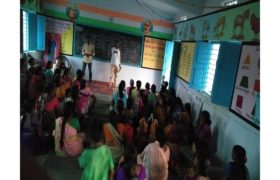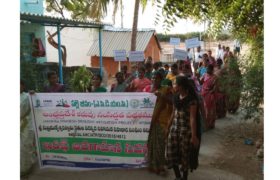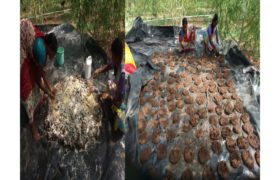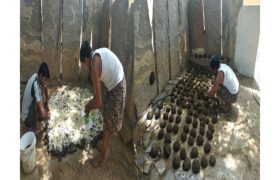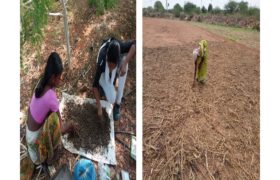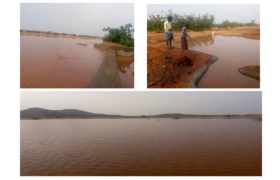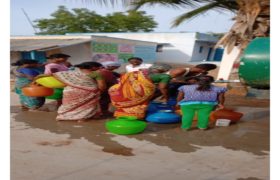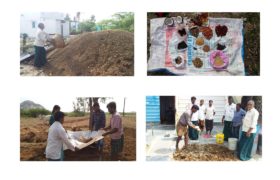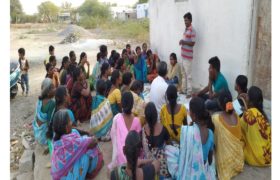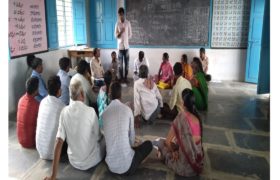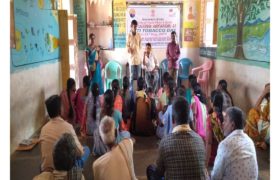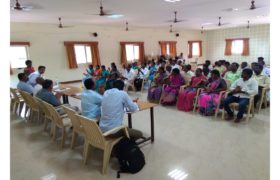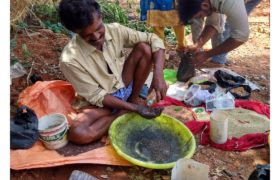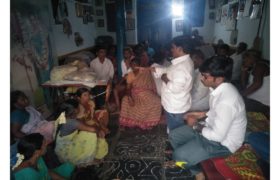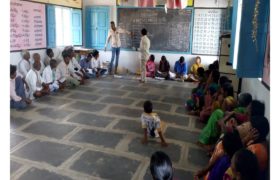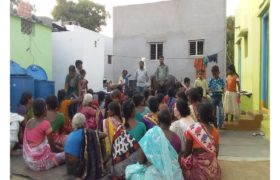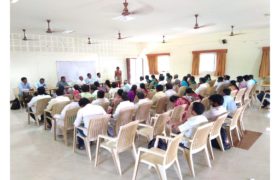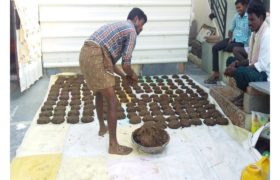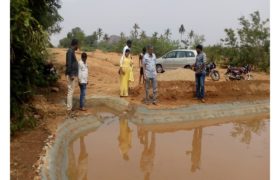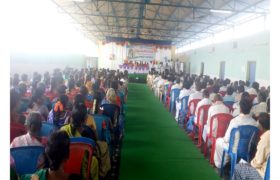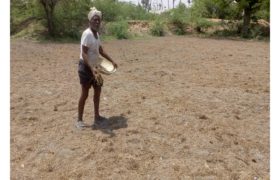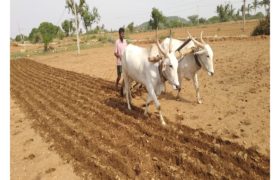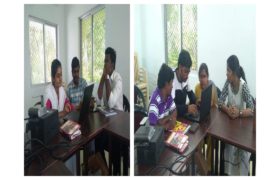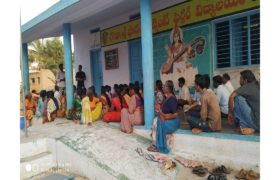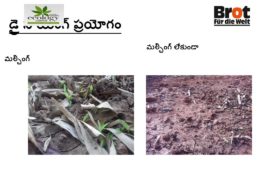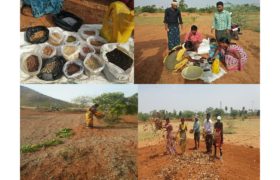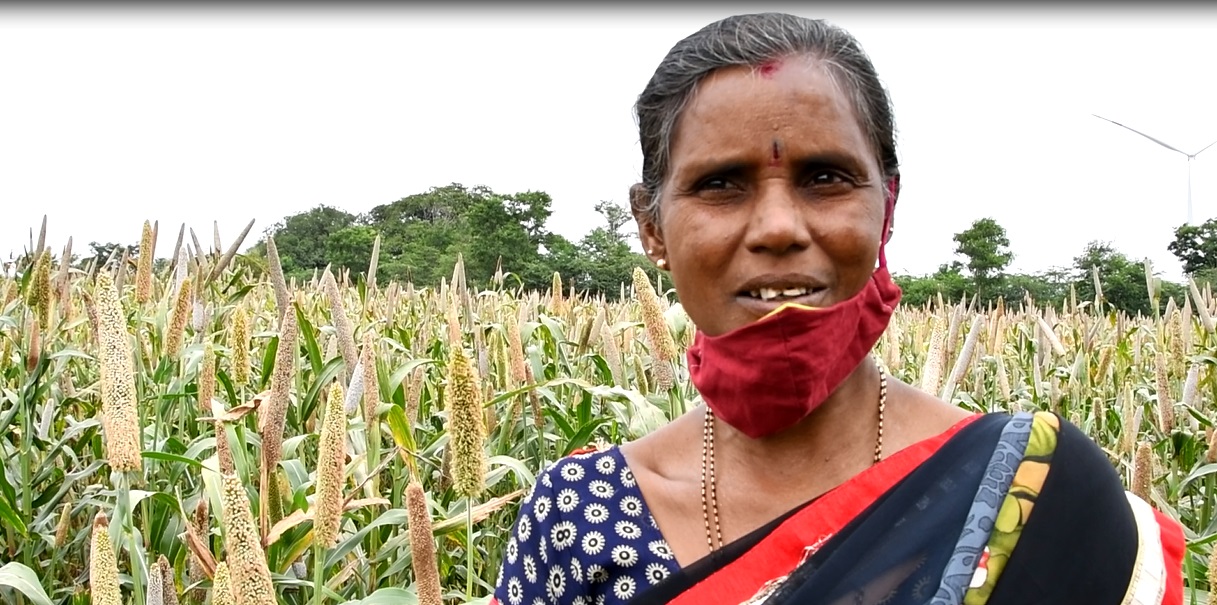
Small and marginal rainfed farmers and farm labors lead a life of dignity and gender equity by practicing agro ecological drought climate resilient farming system and diversifying their livelihoods.
The leadership role of women and socially disadvantaged members (SC/ST/Single women headed households) within the CBO structure is strengthened.
Time Period
April 2021 to March 2024
This Project is a continuation of earlier projects supported by Bread for the World. This phase has been designed based on the experiences and lessons learned from the previous projects.
Our Objectives
Small and marginal rainfed farmers and farm labour, particularly women, reduce their vulnerability to drought-climate variability and improved their livelihoods.
Goals
Small and marginal rainfed farmers and farm labors lead a life of dignity and gender equity by practicing agro ecological drought climate resilient farming system and diversifying their livelihoods.
Results of this Project
|
Farmers, particularly women, acquire capacities and participate actively in the CBOs and project processes |
|
|
A cadre of Women Karyakathas is created to support, promote and implement agro ecological farming practices at village level |
230 Women Karyakartas |
|
Farmers participate and voice for gender equality, drought mitigation, livelihood diversification and relevant government policies / programs |
15,000 Farmers (90% of women) |
|
Farmers acquired awareness, technical and practical knowhow on drought climate resilient agro ecological farming practices promoted by AF |
15,000 Farmers (90% women) |
|
Institutions are strengthened |
|
|
Functional discipline, financial management capacities and mutual cooperation have improved at village level |
230 Grama SasyaMitra Groups |
|
800 SasyaMitra groups |
|
|
Rs 9.5 crores of savings amount is being revolving as credit at the group level |
|
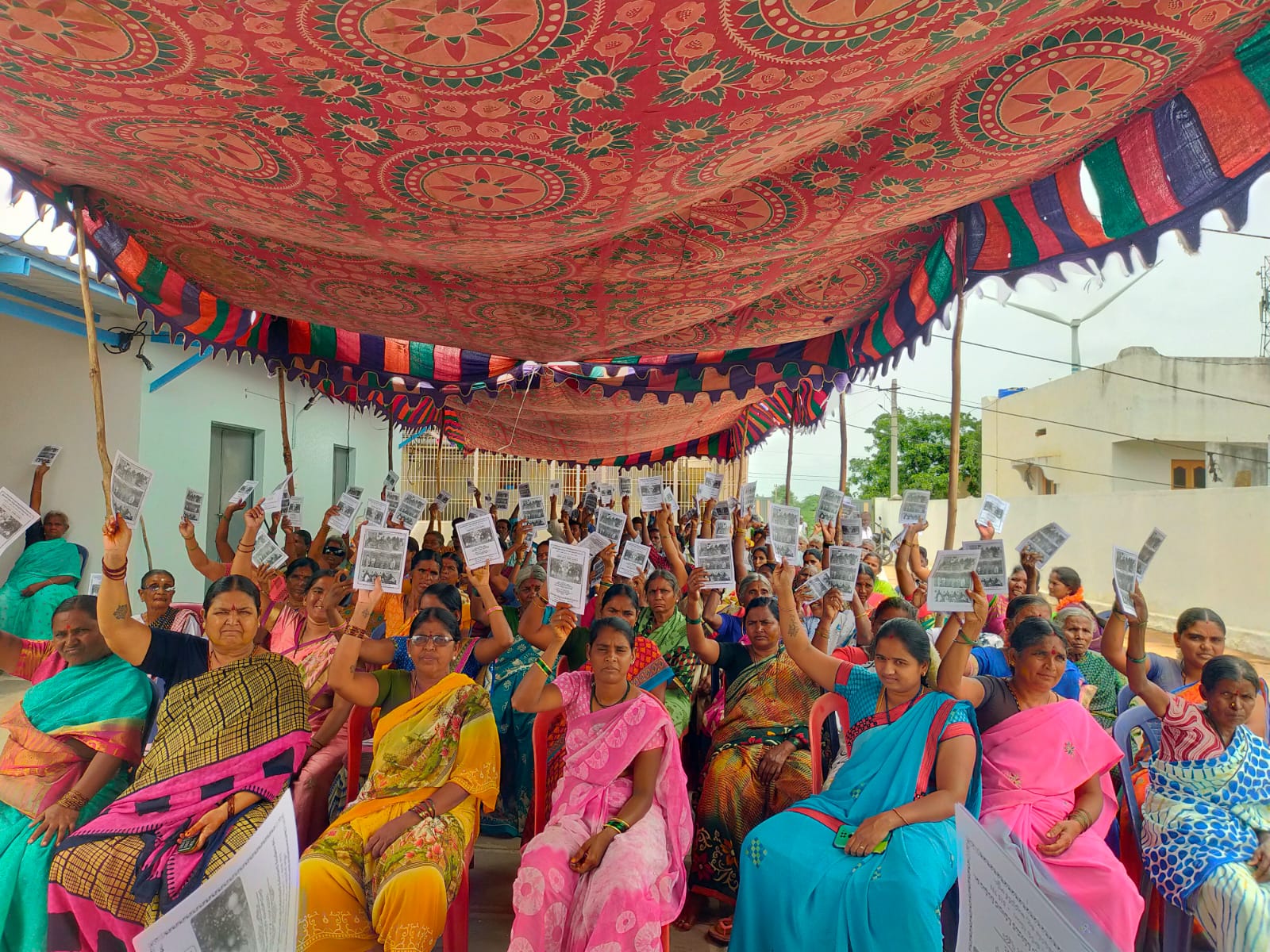


|
Drought Climate Resilient Farming Practices adopted: |
|
|
Shift from mono crops to diversified food crops enhancing agro bio-diversity |
12000 farmers (75% women) in 10,000 hectares of rainfed lands |
|
Practicing of contingency/ relay cropping for enhancing income and fodder availability |
15000 farmers (80% women) in 12000 hectares of rainfed lands |
|
Use of low cost and user friendly equipment to reduce work burden for women |
2000 women |
|
Provision of protective irrigation to save the crops from moisture stress (drought) |
3000 farmers in 1250 hectares (2500 women and 500 men) |
|
Inputs for Natural Farming are available to farmers who practice natural farming |
230 villages |


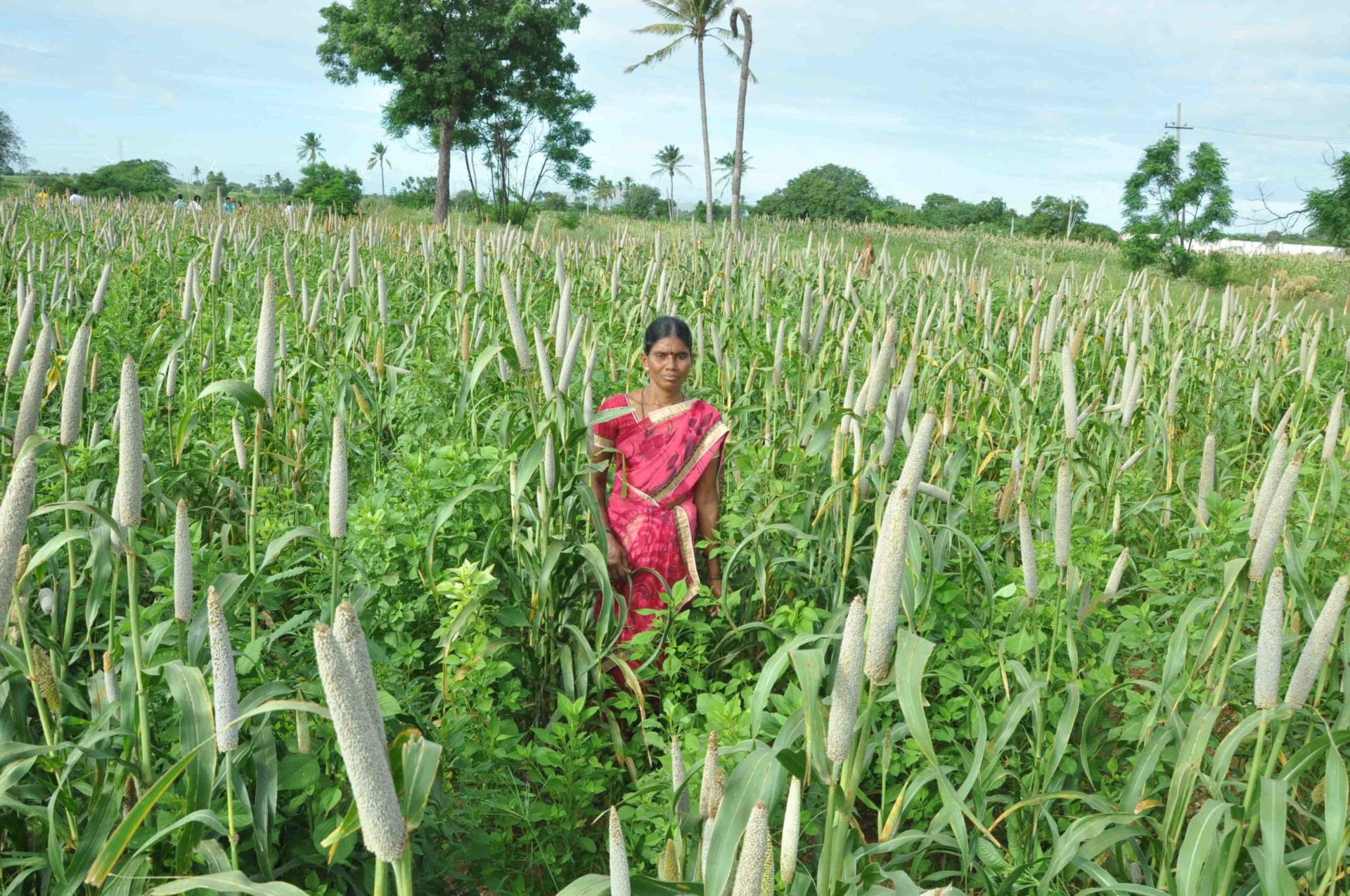
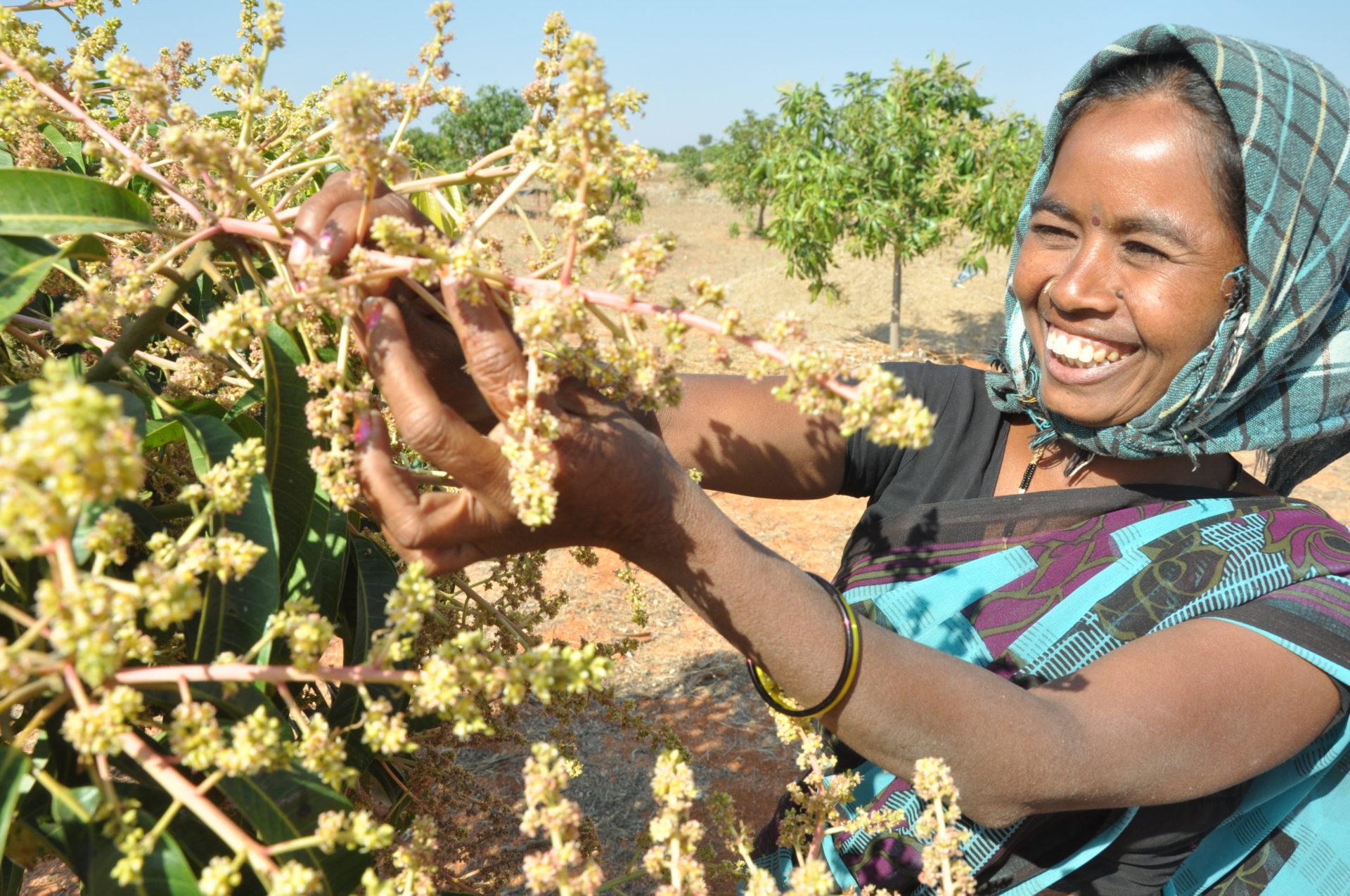
|
Alternative Livelihoods for livelihood diversification for rural youth (men and women) |
|
|
Rural youth acquired employable skills and linked to employment/self-employment |
1600 youth |
|
Women acquired employable skills and linked to employment/self-employment |
500 Women |
|
Women get financial and technical support to take up off-farm & non-farm livelihood activities for generating additional income |
6000 Women |
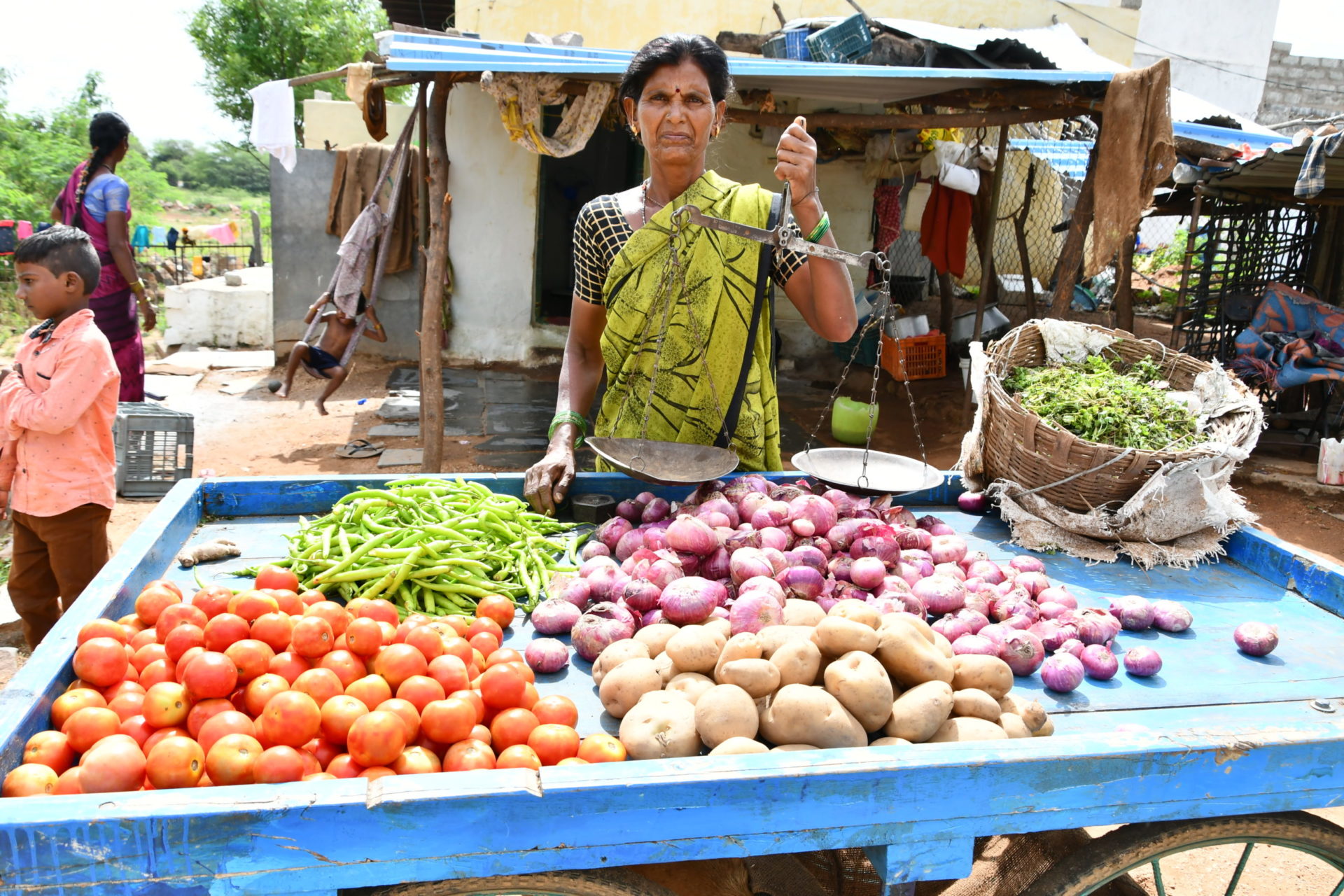
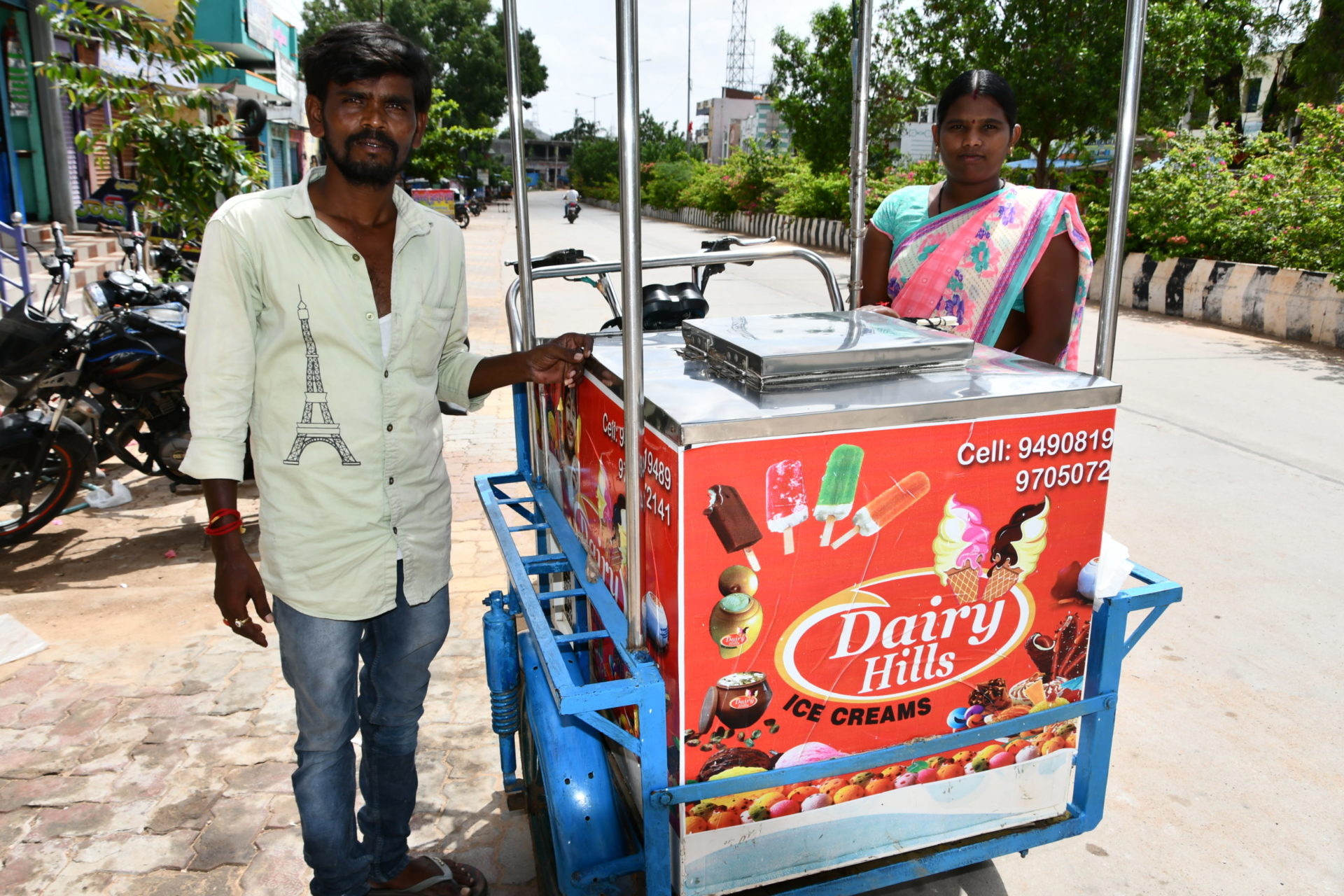
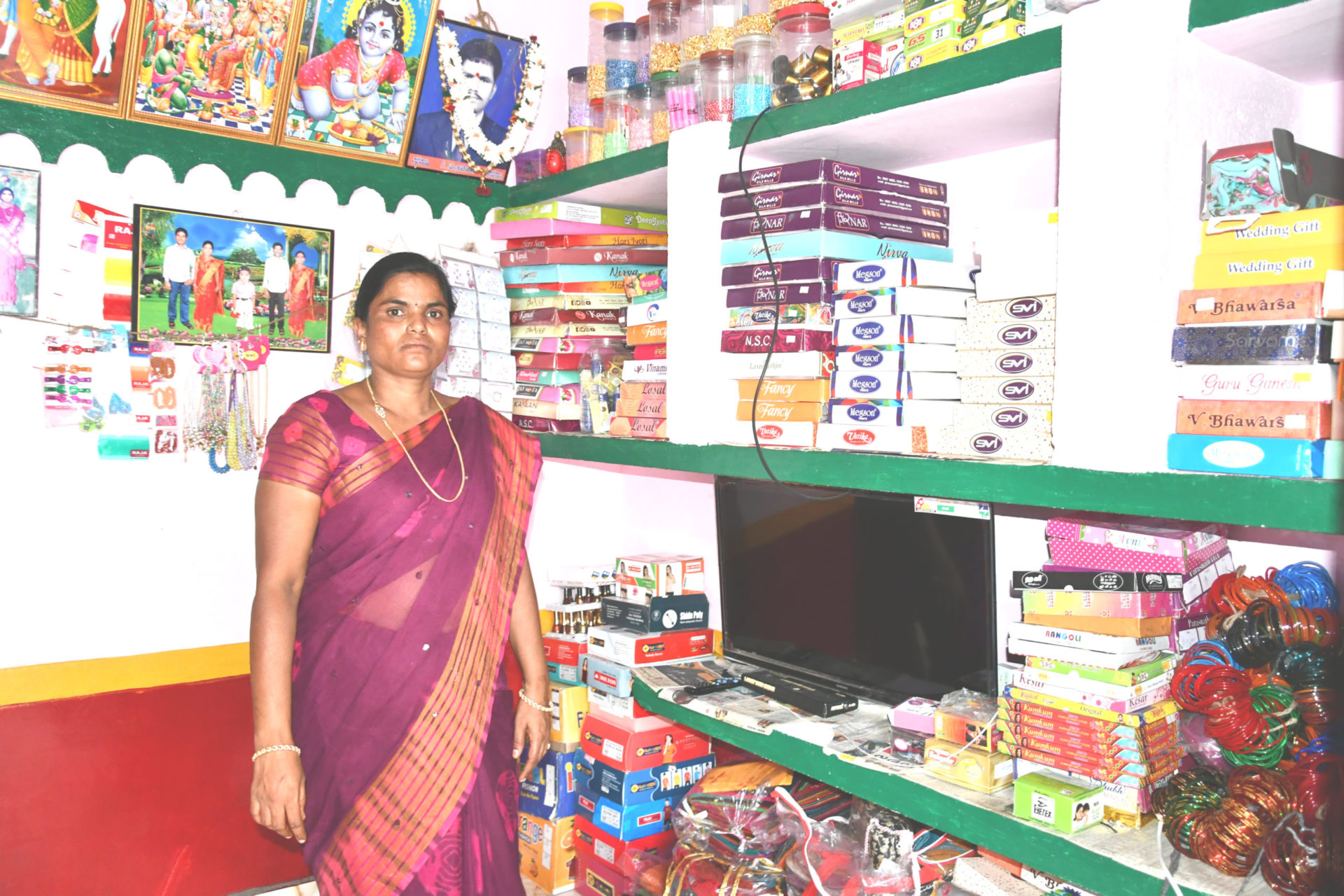
Main Intervention and Activities
|
Improve knowledge and skills of farmers and youth: |
|
|
Organize farmers’ field schools for knowledge transfer on drought adaptive measures |
230 Farmers Field Schools in 230 villages |
|
Organize trainings to Karyakarthas (community animators) in CBO facilitation, drought adaptation measures and diversified livelihoods |
48 Training Programs |
|
Organize skill trainings to rural women on garment making, sanitary goods, millets snacks etc |
25 Training Programs for Women |
|
Organize trainings to rural youth on vocational trades like driving, cell phone mechanism, motor bike repairs, home appliances repairs etc |
64 Training Programs |
|
Sponsor training programs to rural youth for their skill up-gradation conducted by other training institutes |
300 Youth |
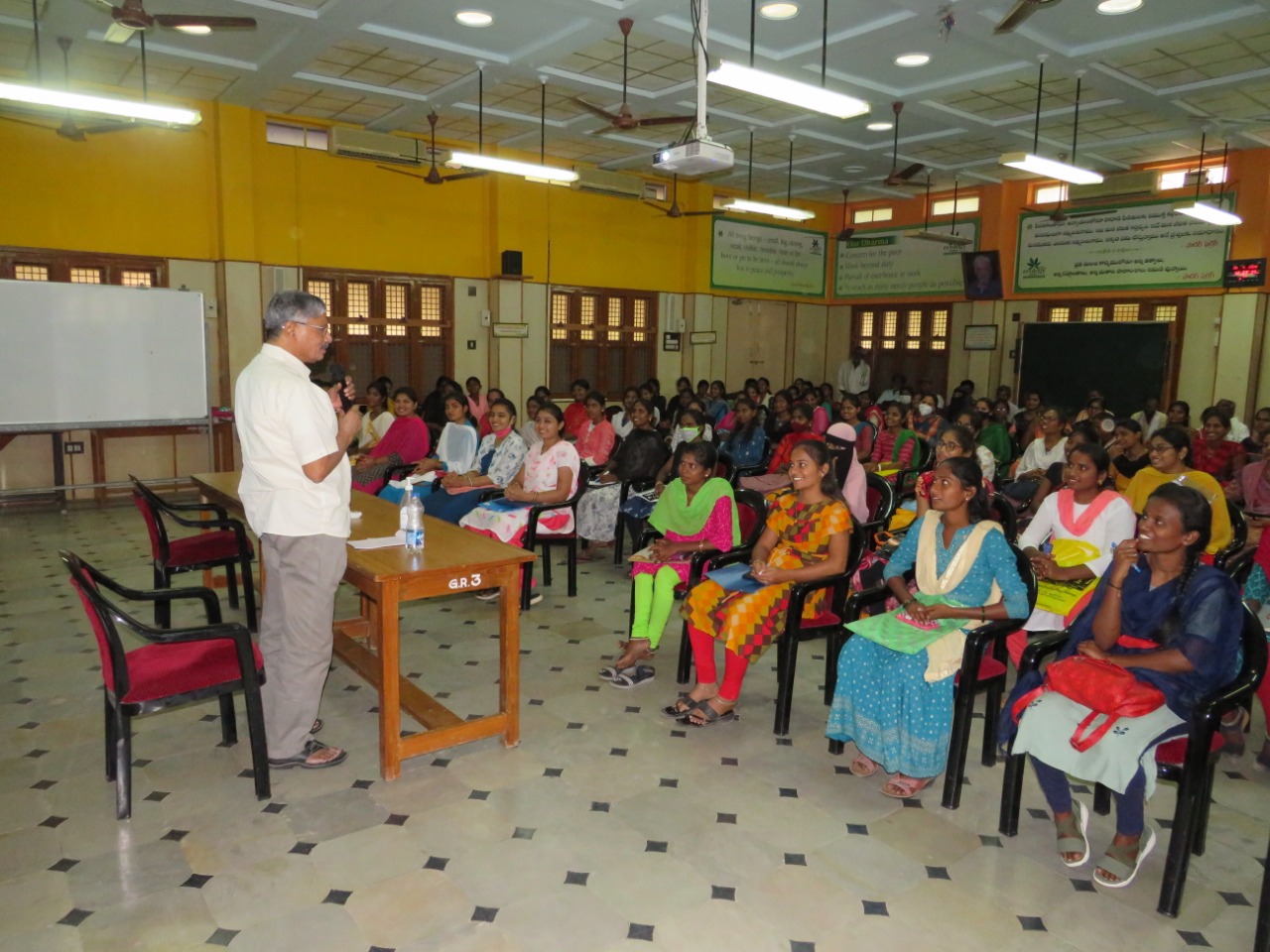
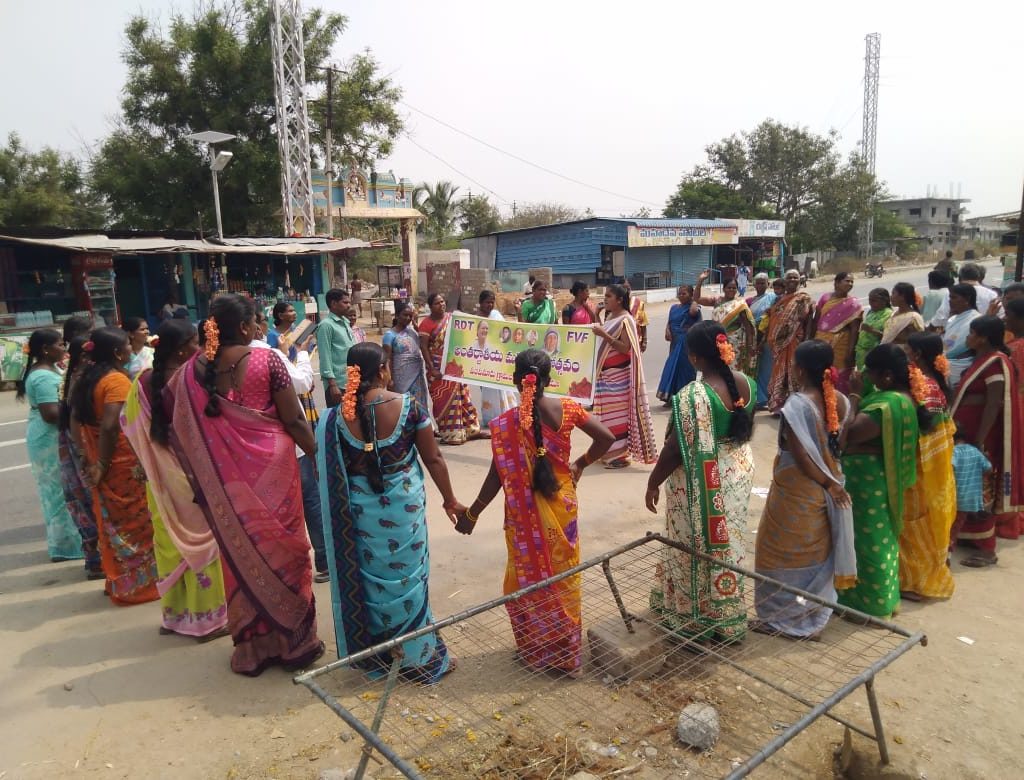
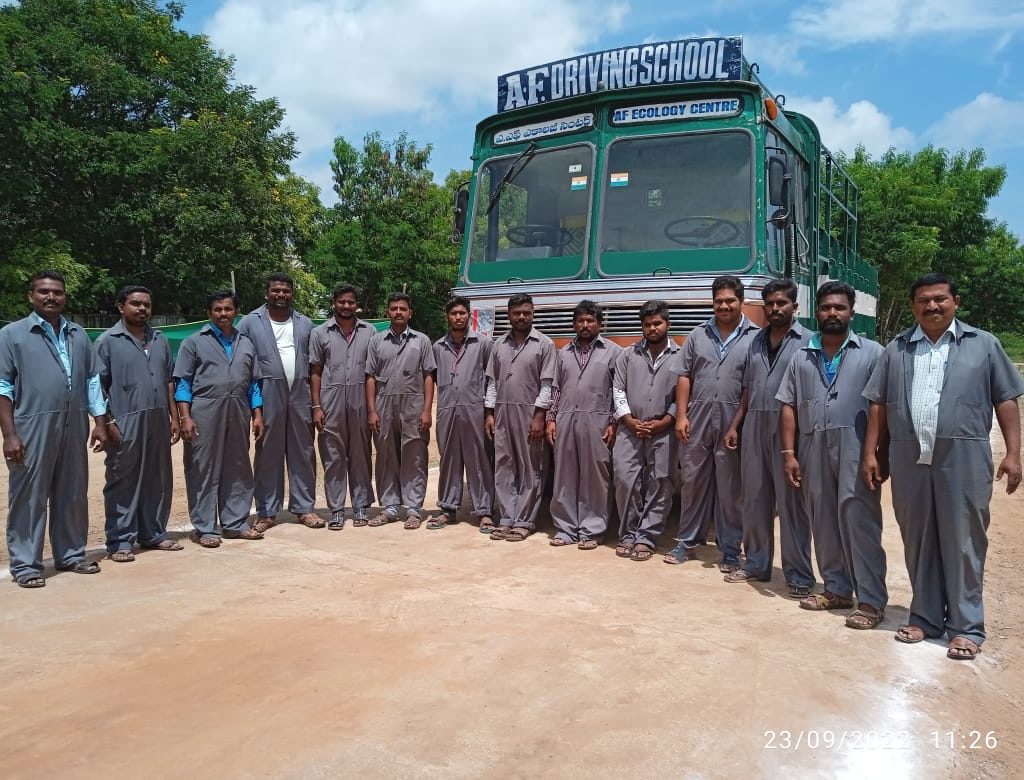
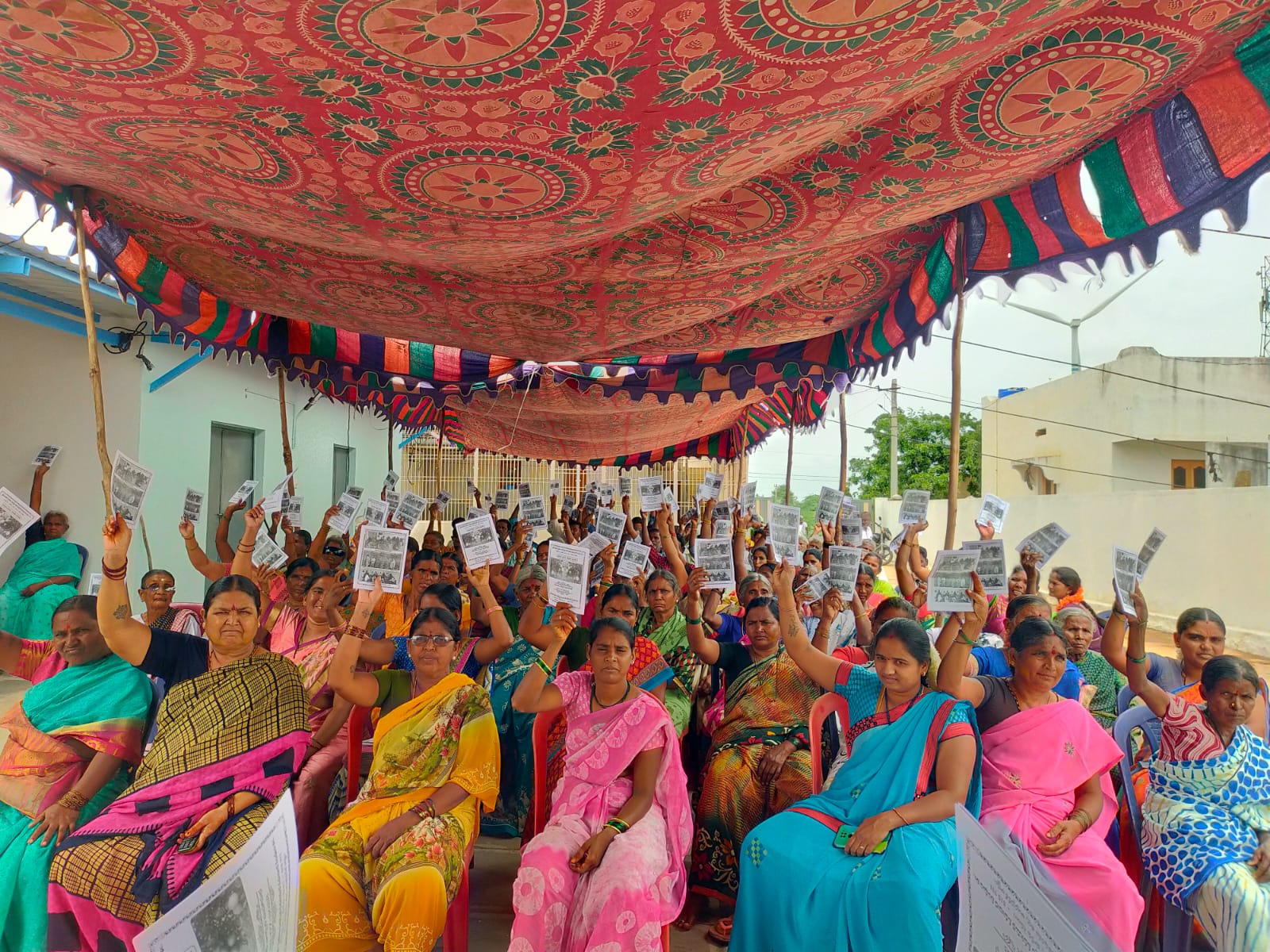
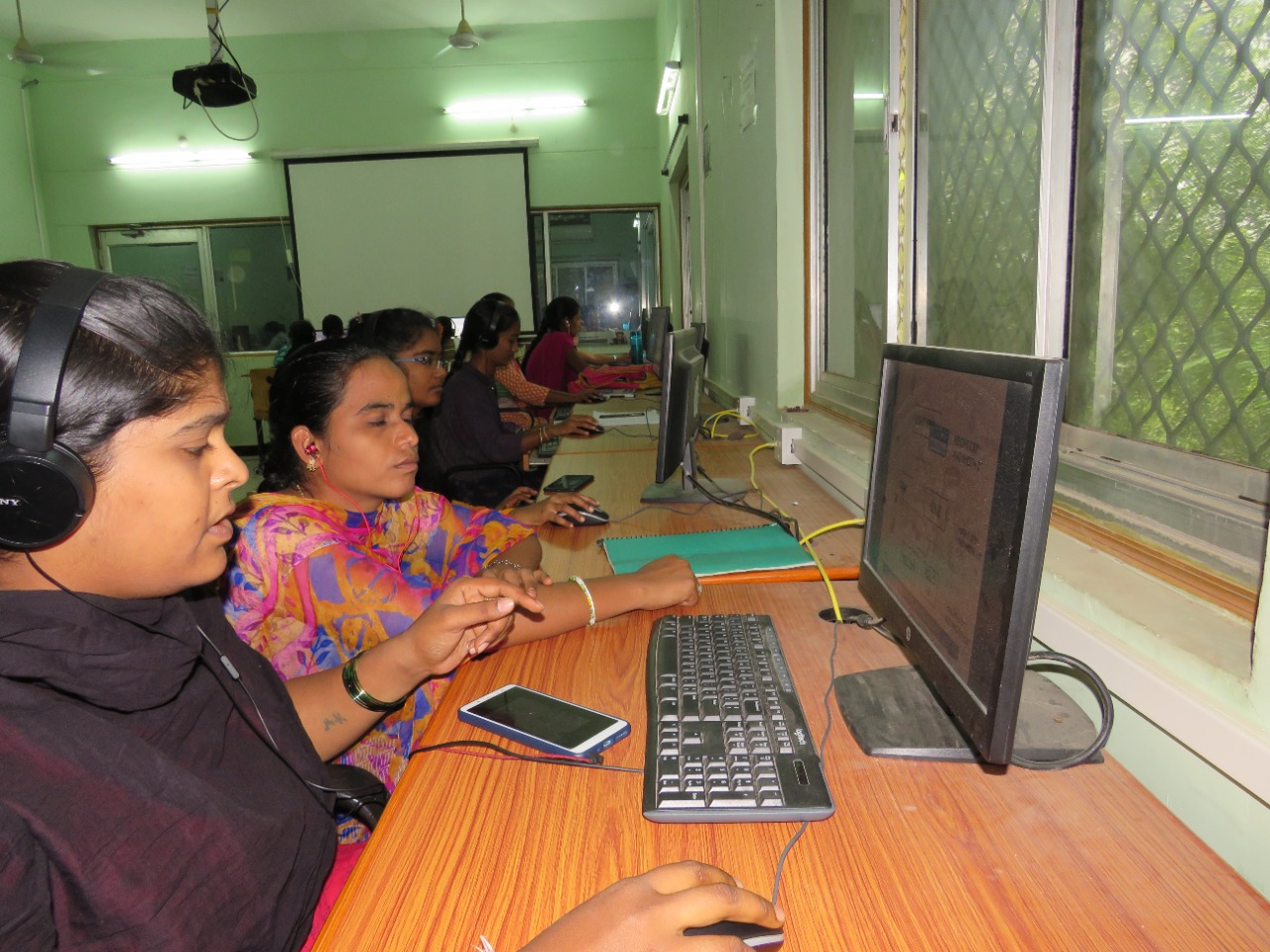
|
Community Based Organisations strengthened: |
|
|
Total community based organizations facilitated · 900 Sasya Mitra Sangha (Friends of Farmers); · 220 Grama SasyaMitraSangha at Village level · 8 Mandal SasyaMitraSanghas at mandal level |
1100 CBOs |
|
No of households part of these CBOs |
18000 members (90% women) |
|
Community members and Leaders take part in participatory planning; monitoring and review of project activities |
630 person days |
|
FPOs get assistance in developing business development plan and access to capital to pursue their businesses |
8 FPOs |
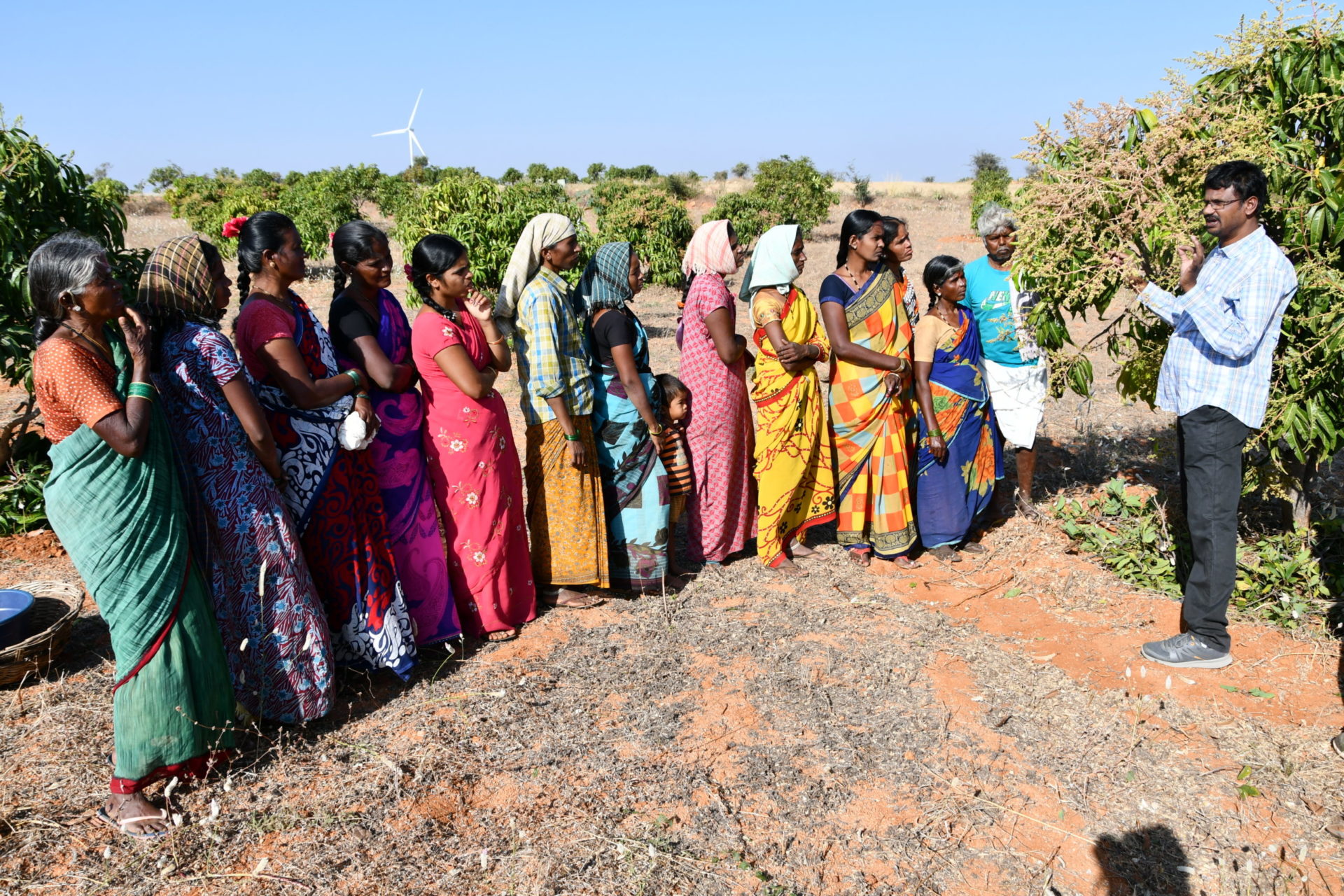

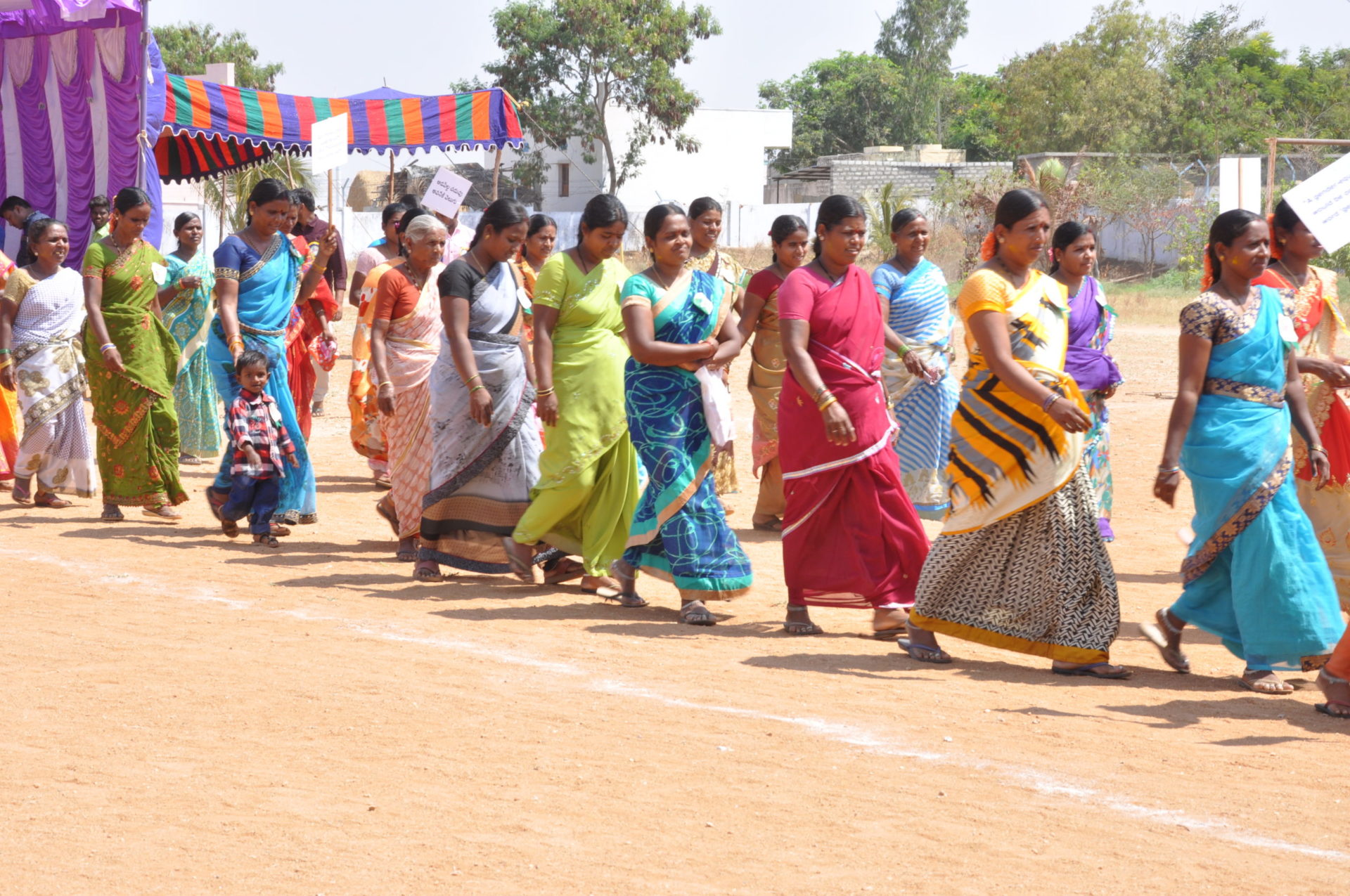
|
Crop demonstrations organized on drought-climate resilient farming practices: |
|
|
Protective Irrigation for rain-fed crops |
1250 hectares |
|
Contingency and relay crops in drought years |
12000 Hectares |
|
Crop Diversification with food crops in rain-fed farms |
10000 Hectares |
|
Women farmers get user friendly low cost farm equipment to for weeding and sowing operations |
2000 women farmers |
|
Amplifying the voice of farmers on issues related to drought and gender |
|
|
Organising events like Combating Drought and desertification Day and International Womens Days at mandal or District level for sharing experiences on drought climate resilient farming technologies/practices and exposing them to CSOs and policy makers for their replication |
30 Nos |

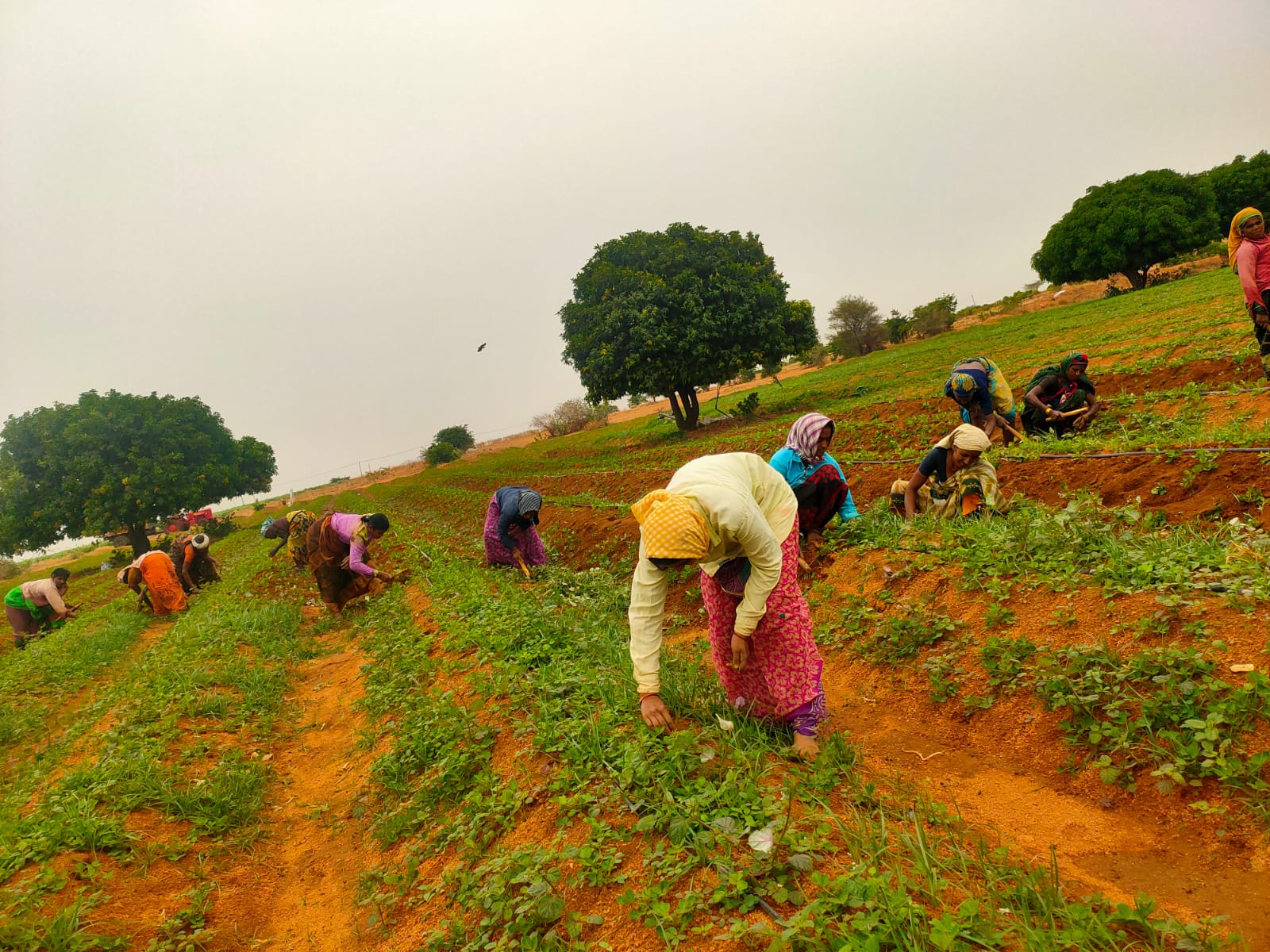
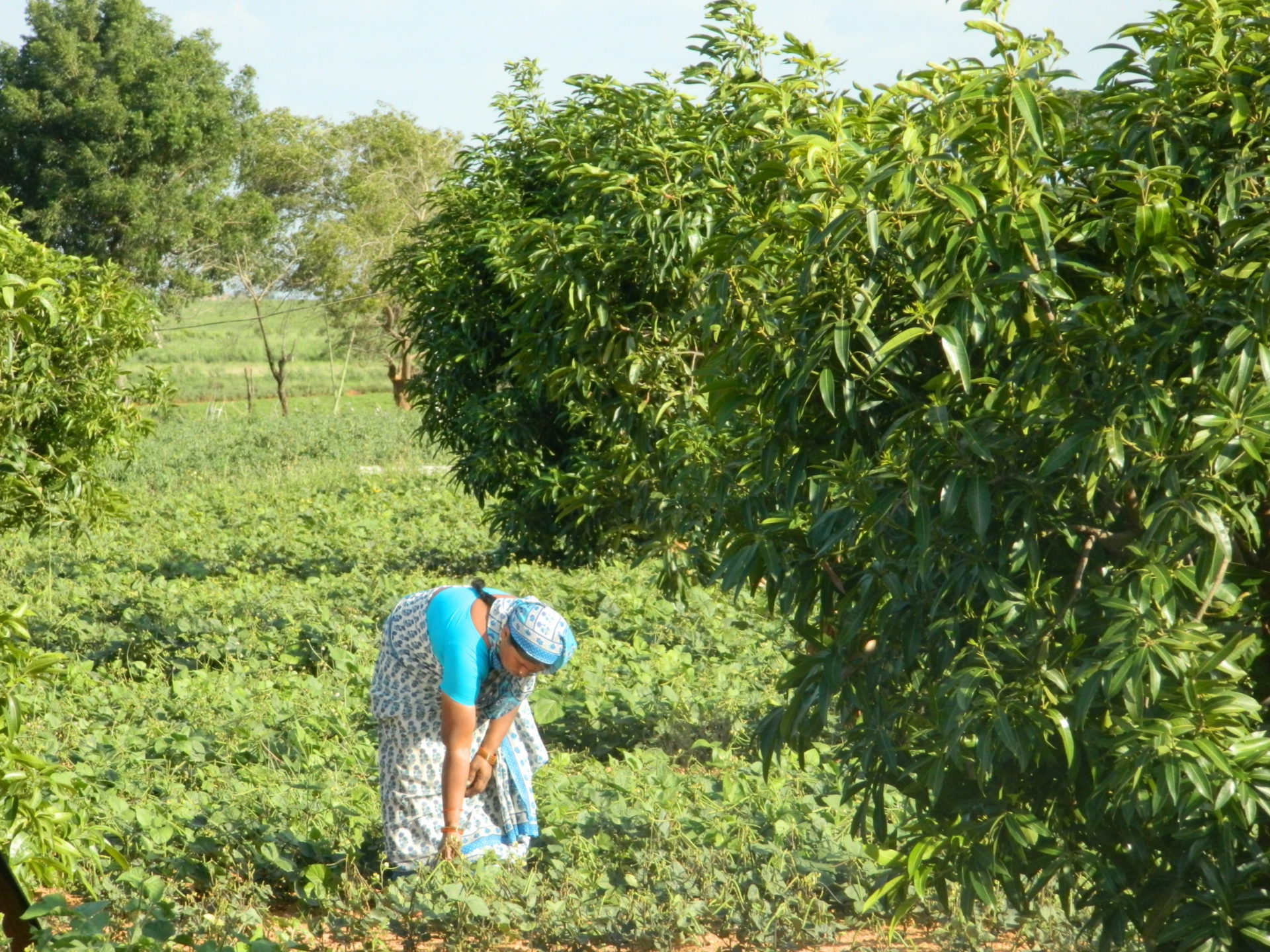
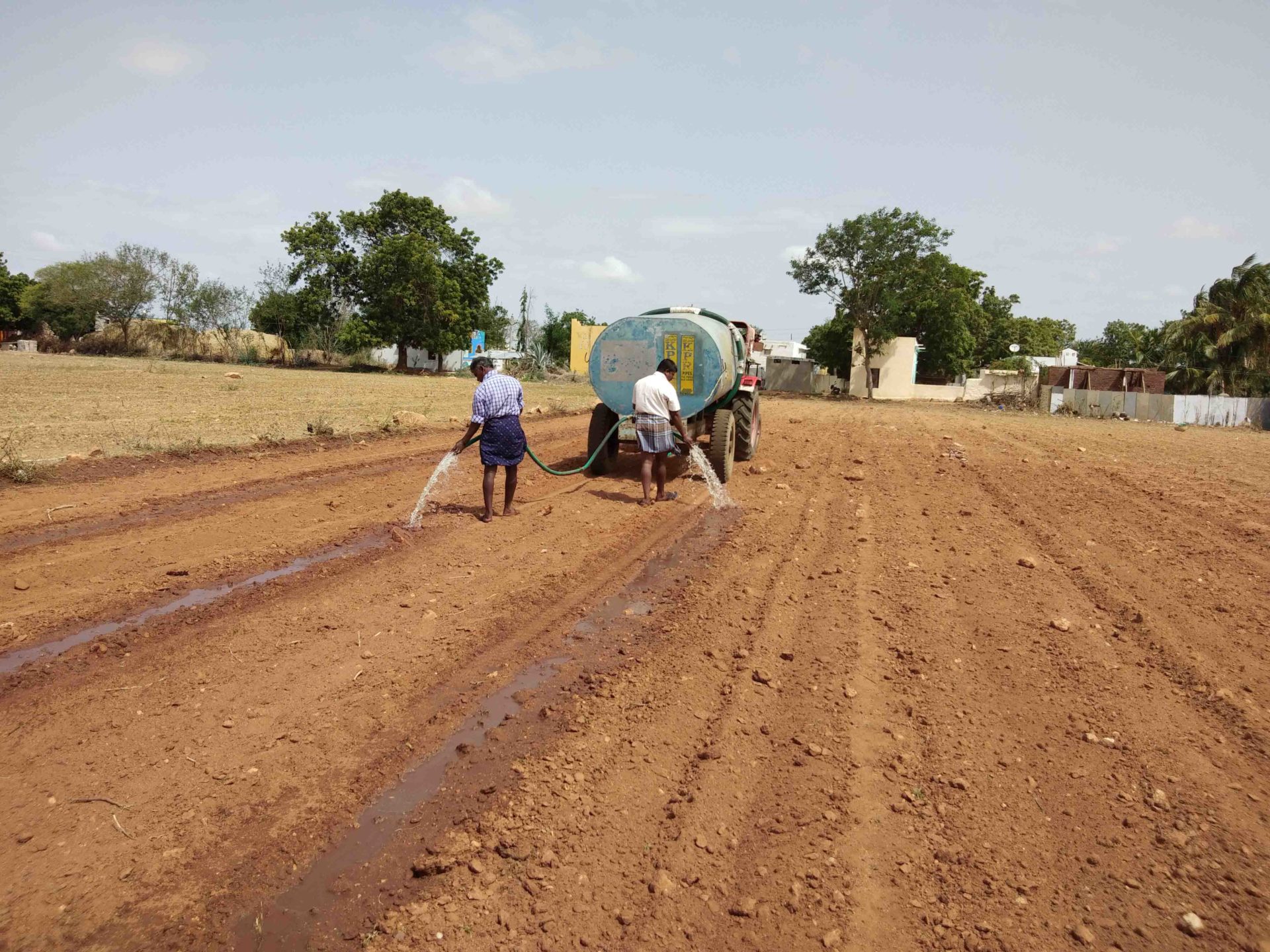
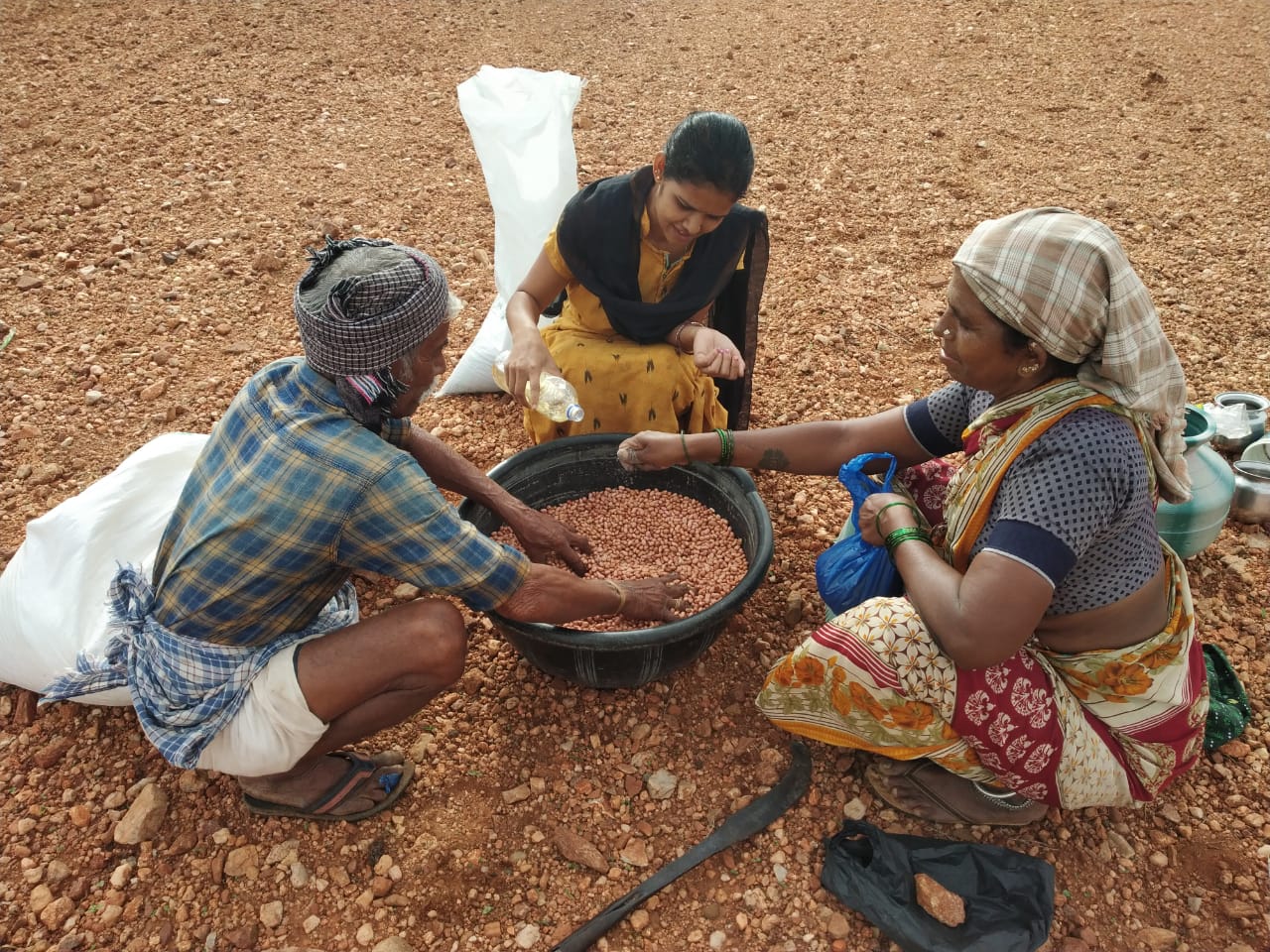
The recommended Drought-Climate resilient diversified and multi-cropping models under rainfed conditions for Anantapur District soils and agro climate are:
|
Crop Model |
Main crop |
Inter crop |
Mixed crops |
Border crops & trap crops |
Relay crop |
|
1 |
Ground nut |
Red gram (11:1) |
Green gram, Cow pea, Field bean, Jowar, Sesame and vegetables (6-8 types) |
Jowar, Bajra, cow pea, castor |
Horse gram and Jowar |
|
2 |
Foxtail Millet |
Red gram (7:1) |
Green gram, Cow pea, Field bean, Jowar, Sesame and vegetables (6-8 types) |
Horse gram |
|
|
3 |
Jowar |
Red gram (7:1) |
Green gram, Cow pea, Field bean, Jowar, Sesame and vegetables (6-8 types) |
Horse gram |
|
|
4 |
Bajra |
Red gram (7:1) |
Green gram, Cow pea, Field bean, Jowar, Sesame and vegetables (6-8 types) |
Horse gram |
|
|
5 |
Little Millet |
Red gram (7:1) |
Green gram, Cow pea, Field bean, Jowar, Sesame and vegetables (6-8 types) |
Horse gram |
|
|
6 |
Kodo Millet |
Red gram (7:1) |
Green gram, Cow pea, Field bean, Jowar, Sesame and vegetables (6-8 types) |
Horse gram |
|
|
7 |
Red gram |
Castor (1:1) |
Vegetables (6-8 types) |
||
|
8 |
Green gram |
Red gram (7:1) |
Vegetables (6-8 types) |
Jowar |
Jowar |
|
9 |
Bengal Gram |
Coriander (7:1) |
vegetables (6-8 types) |
Jowar |
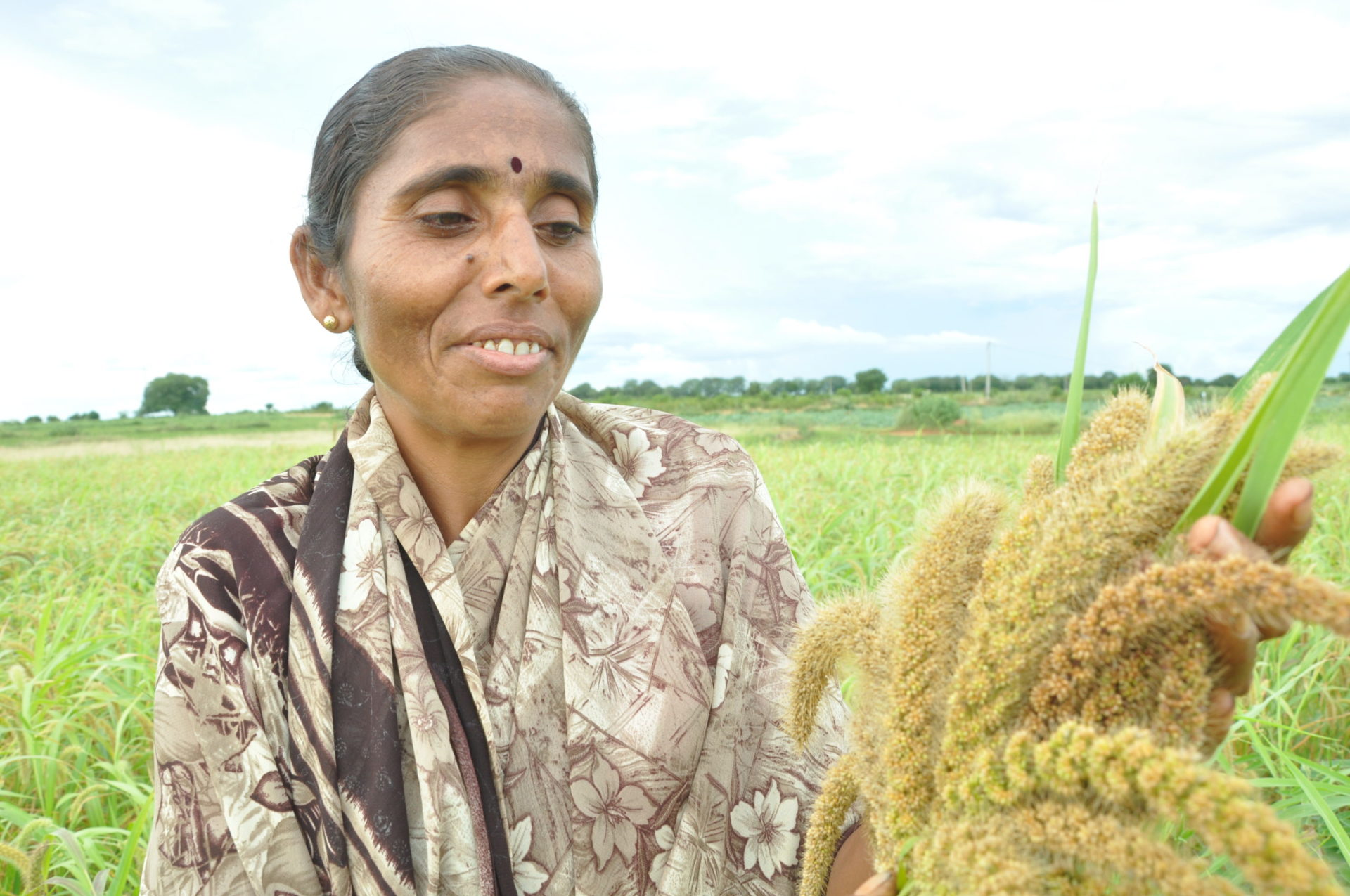
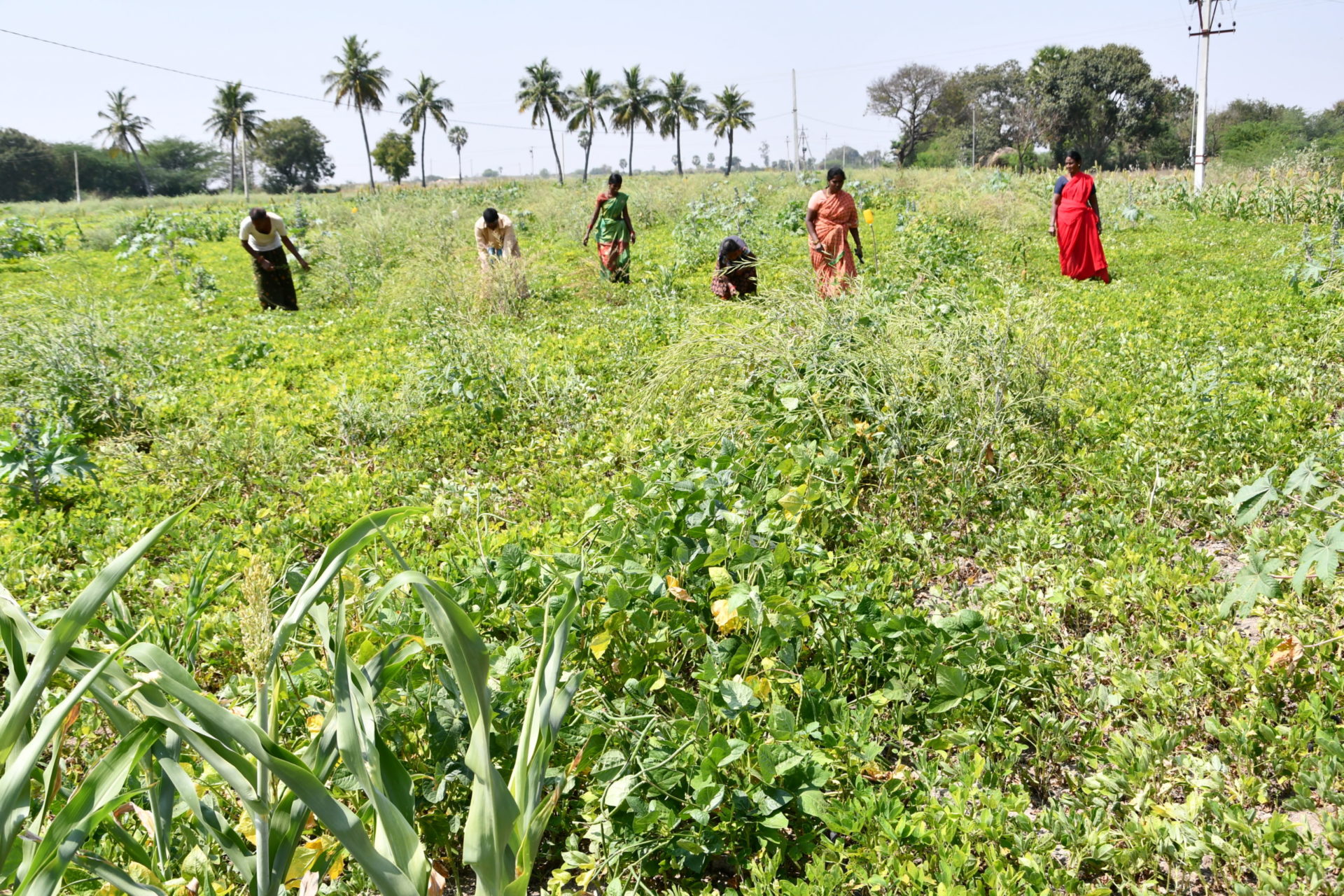
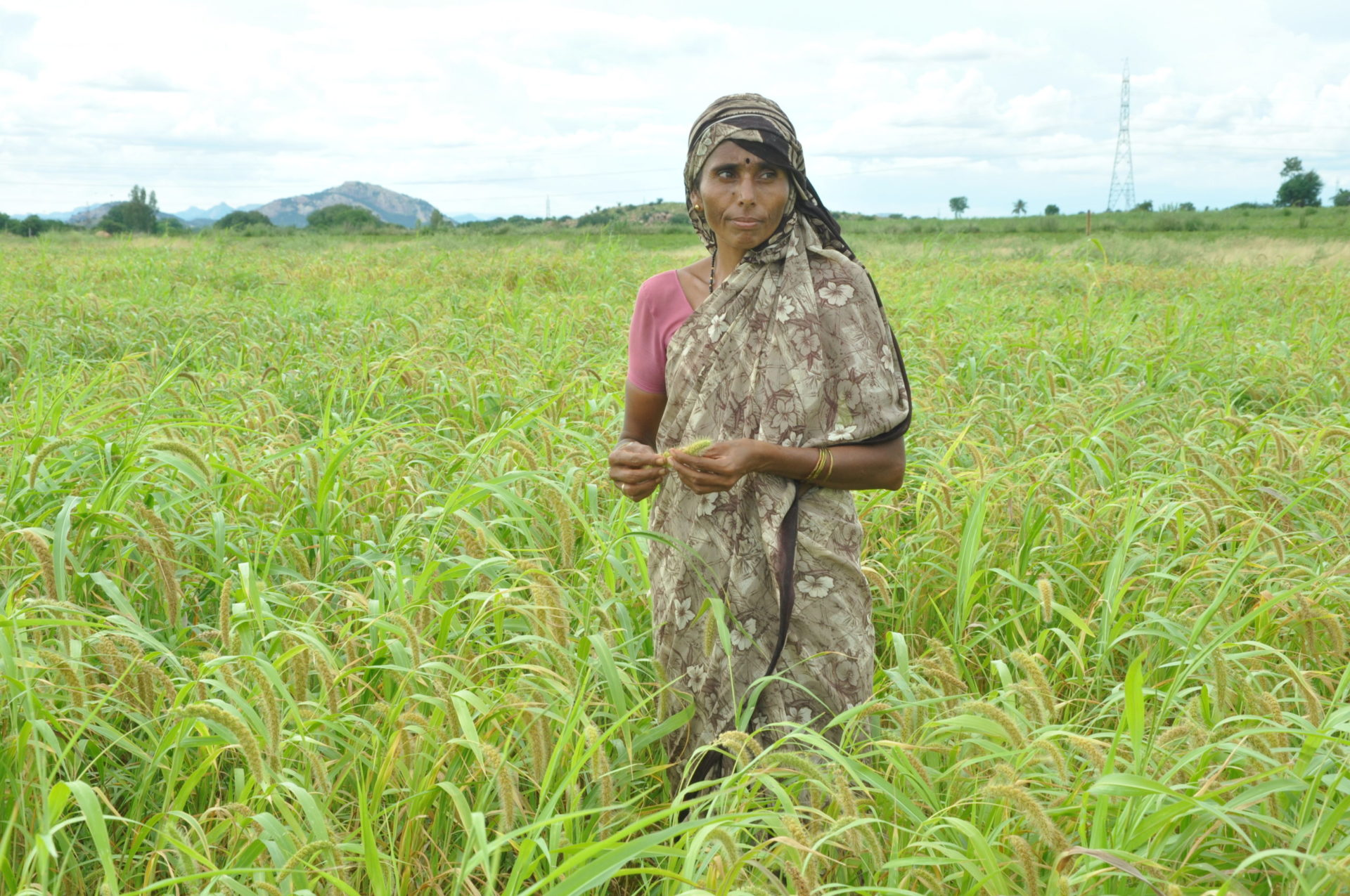
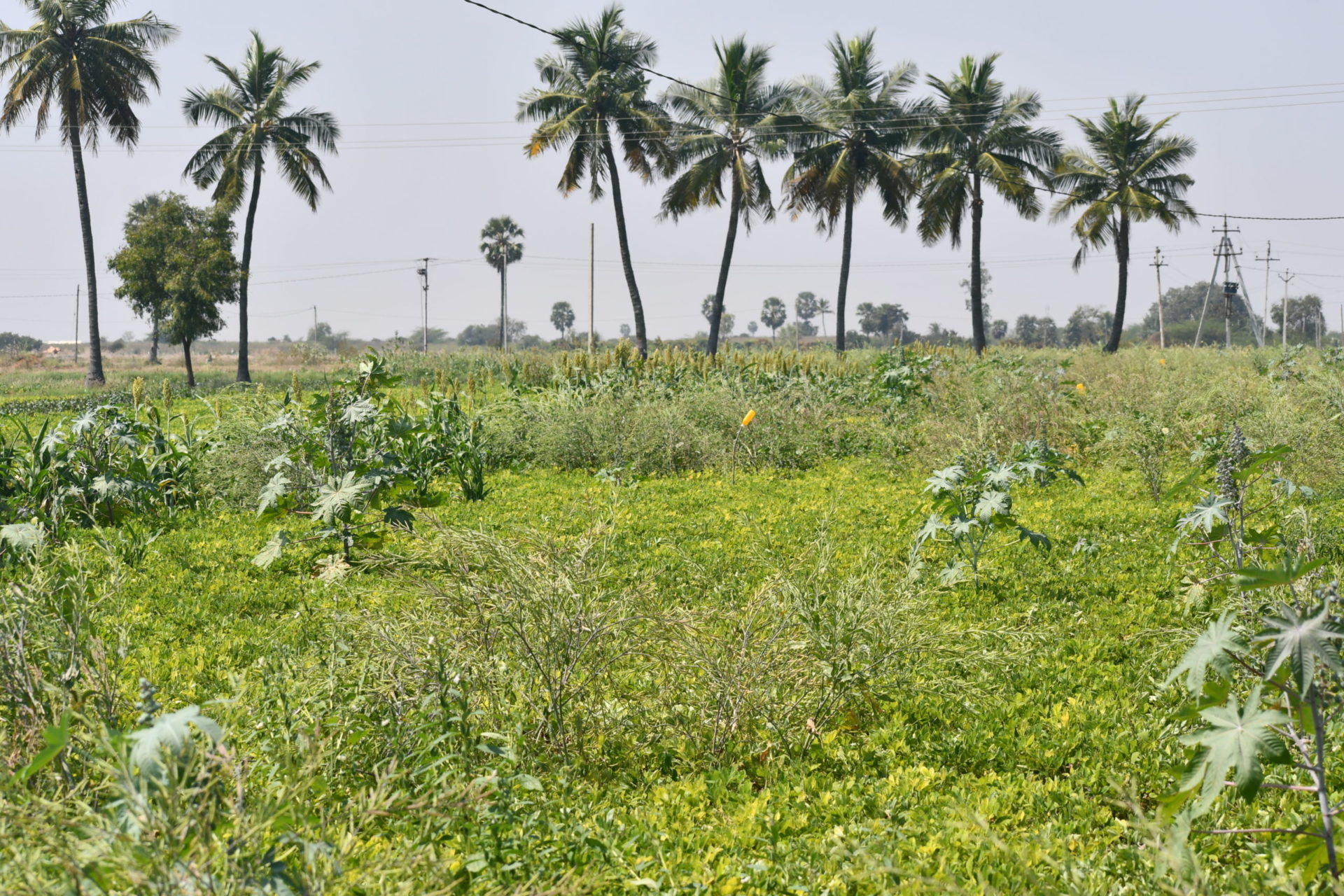
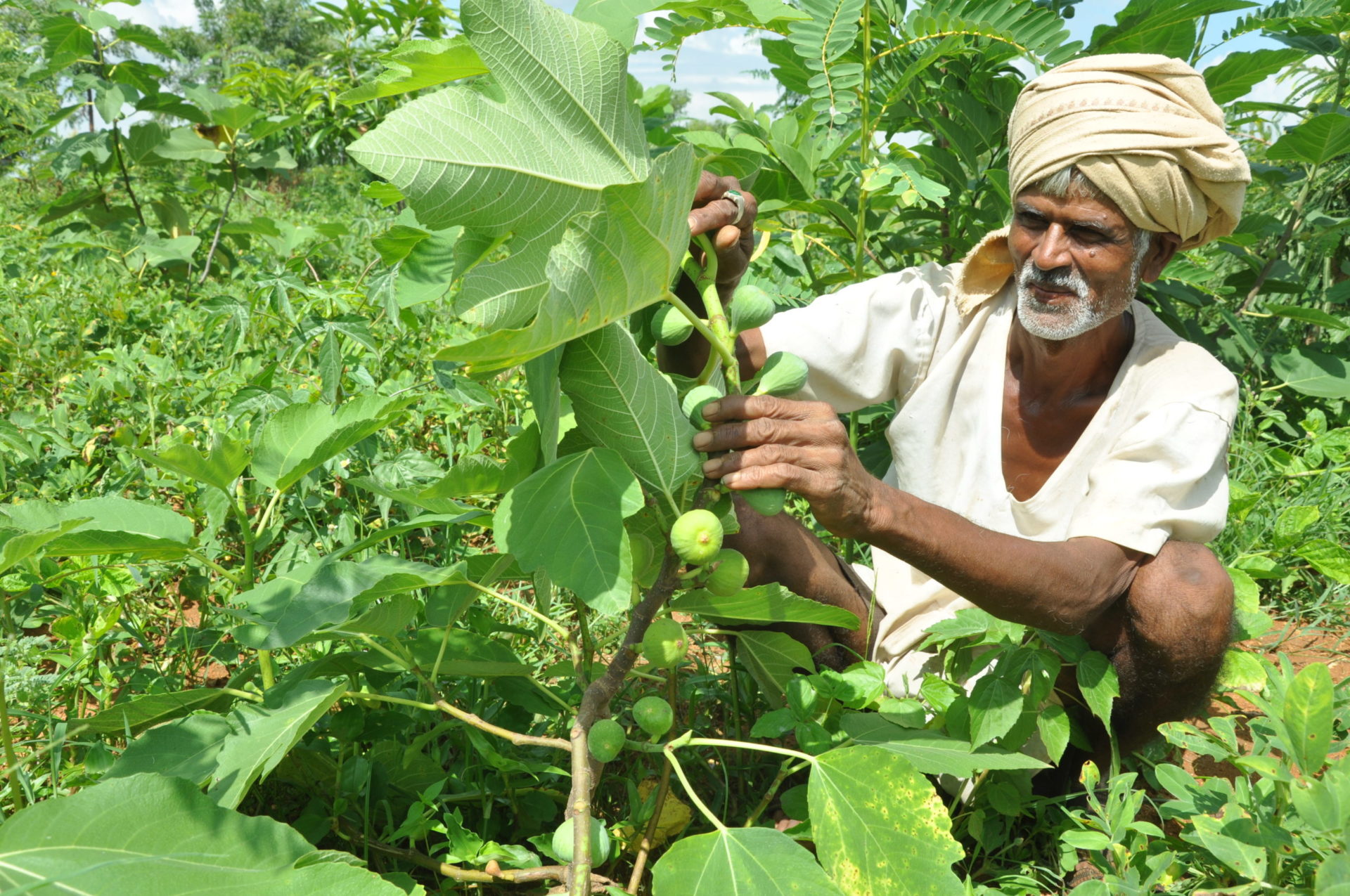
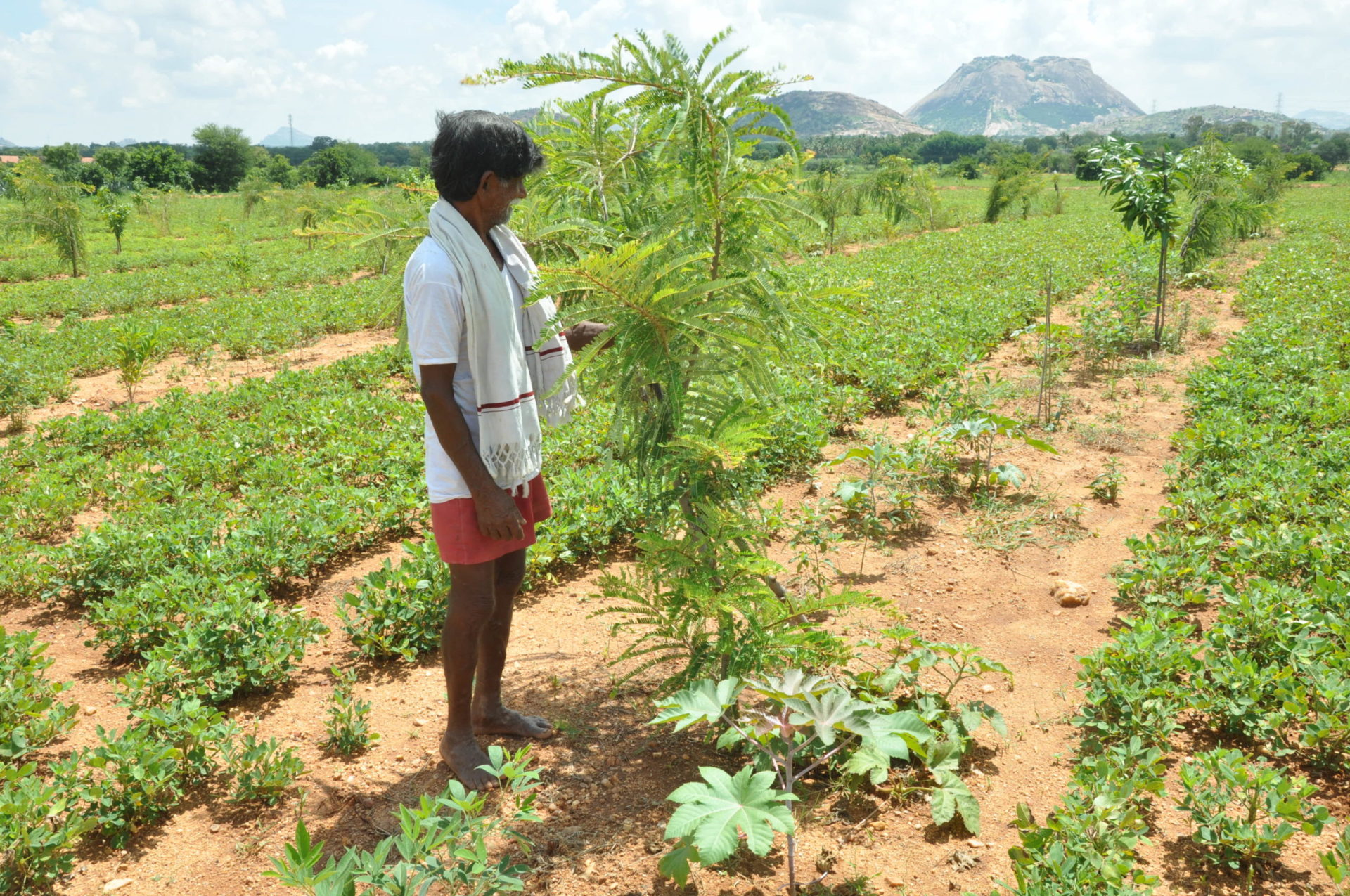
These are mainly food crops consisting of millets, pulses, oil seeds and vegetables.
The recommended practices for mitigating drought in rainfed agriculture in Anantapur agro climate are:
- Inter cropping / mixed cropping as against mono cropping
- Sowing across the slope (contour sowing)
- Crop Diversification with millets, pulses and oil seeds
- Natural Farming practices to reduce usage of hazardous agro-chemicals
- Multi-tree cropping models suitable for rainfed conditions
- Contingency and relay crops
- On-farm rain water harvesting and use for protective irrigation
- Protective Irrigation during long dry spells to save crops from drought
- Row water sowing when the timely sowing rains fail
- Mulching for minimising moisture evaporation and enhancing soil fertility
- Cycle seeder cum weeder for reducing the drudgery and cost saving
12. Seed multiplication and storage with 3 layer bags
The following are the Natural Farming protocols/practices promoted through SADL project:
- Avoid the usage of genetically modified seeds, chemical pesticides and fertilizers
- Apply Farm yard manure/ Sheep penning/ Green manuring before cultivation
- Do Seed treatment with Beejamrutum or Beejaraksha before sowing
- Sow Border crops and trap crops as recommended in crop models
- Sow Mixed crops or Inter crops with pulses, millets and vegetables
- Apply Jeevamrutham, Ghanajeevamrutam or type 2 JVM as per schedule
- Adopt mechanical pest controls like Bird perches, White & Yellow boards, pheromone traps, delta traps, light trap etc
- Use biological pest control methods like Neem oil spray and herbal pest repellents
9. Develop required Biomass on the bunds for fodder, mulch, wind break etc.


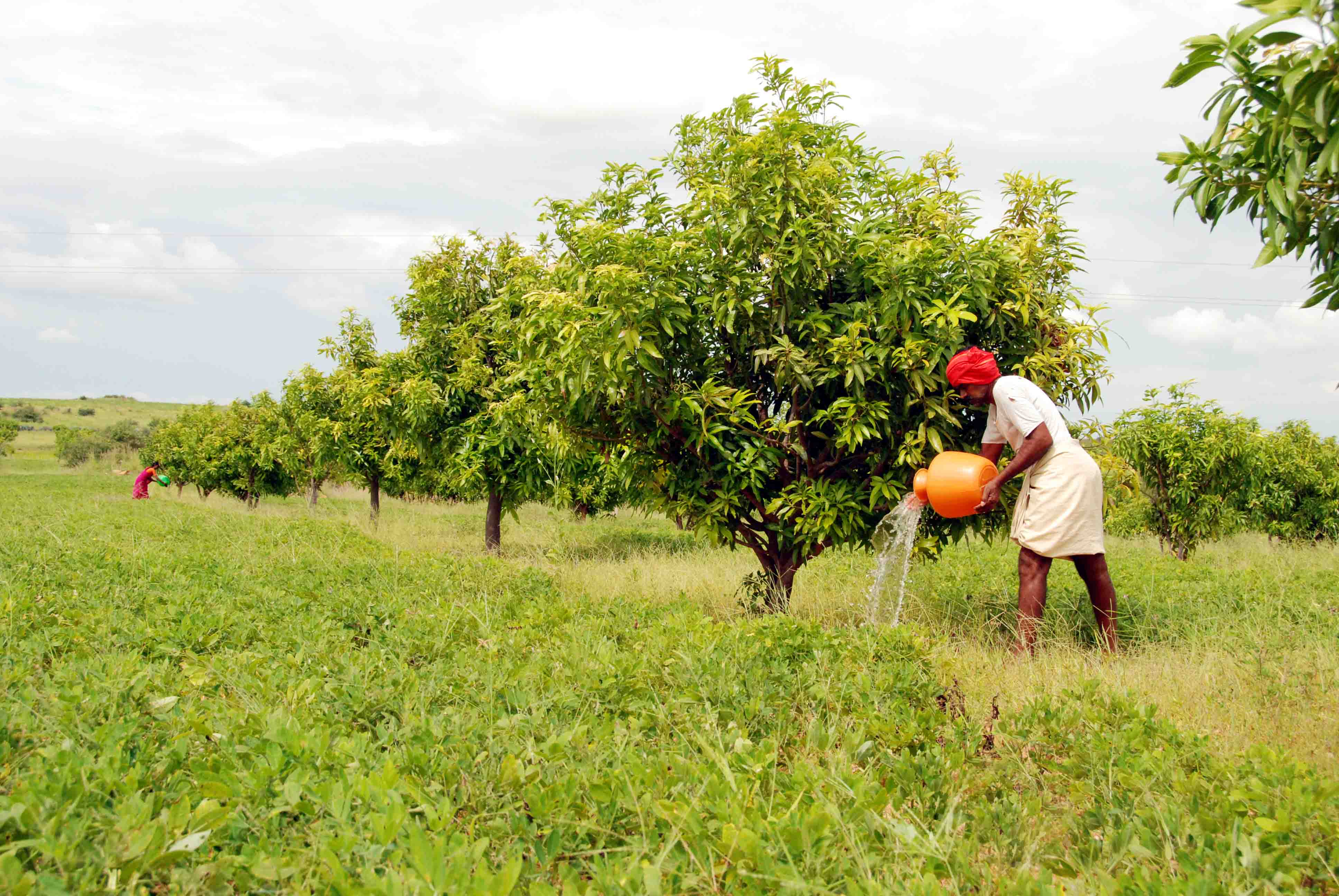
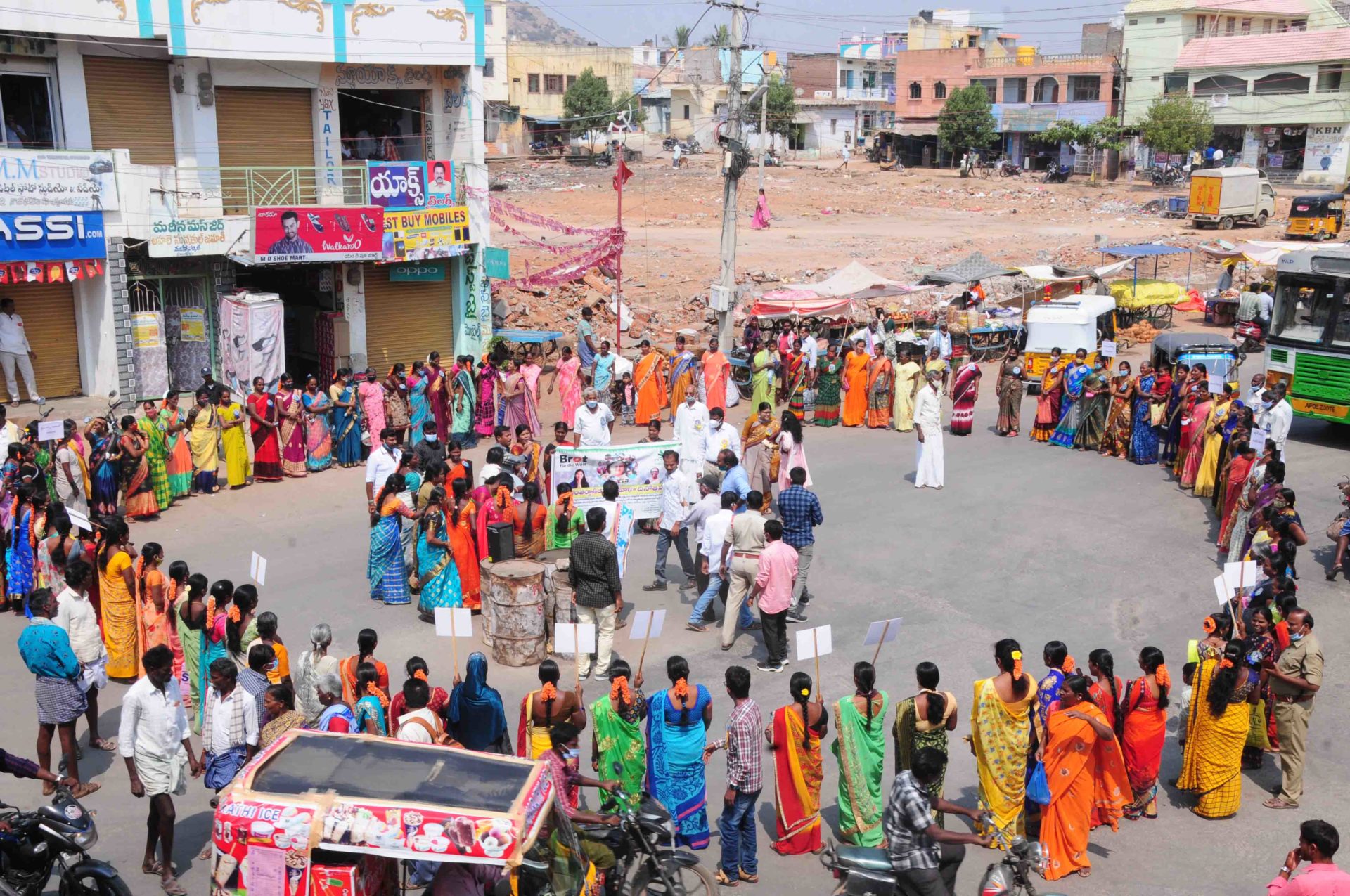
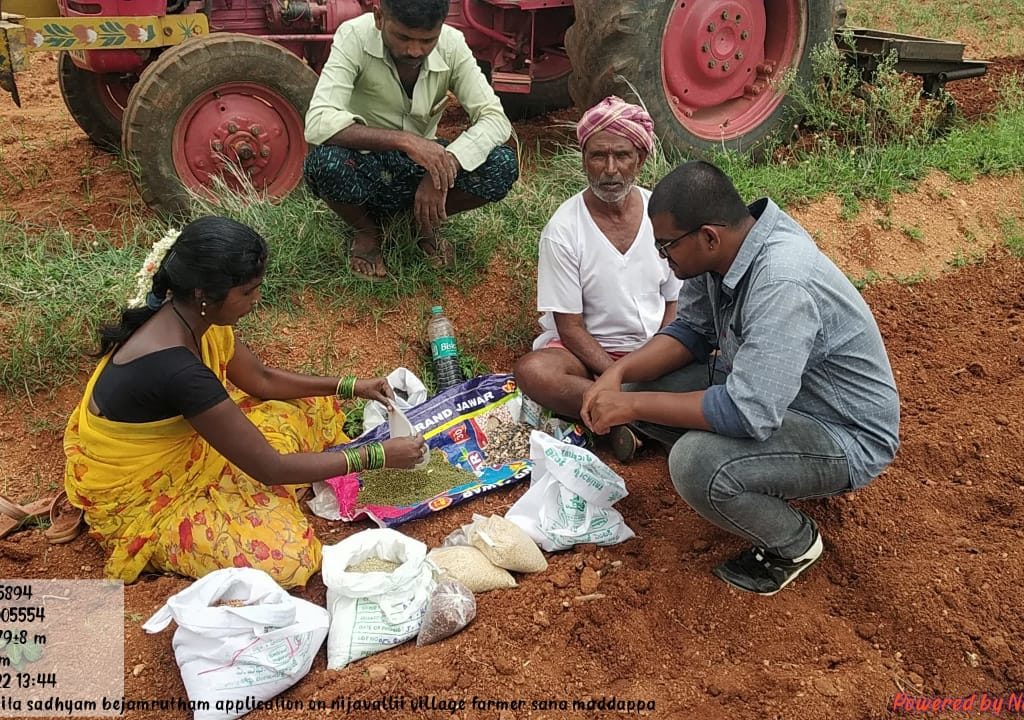
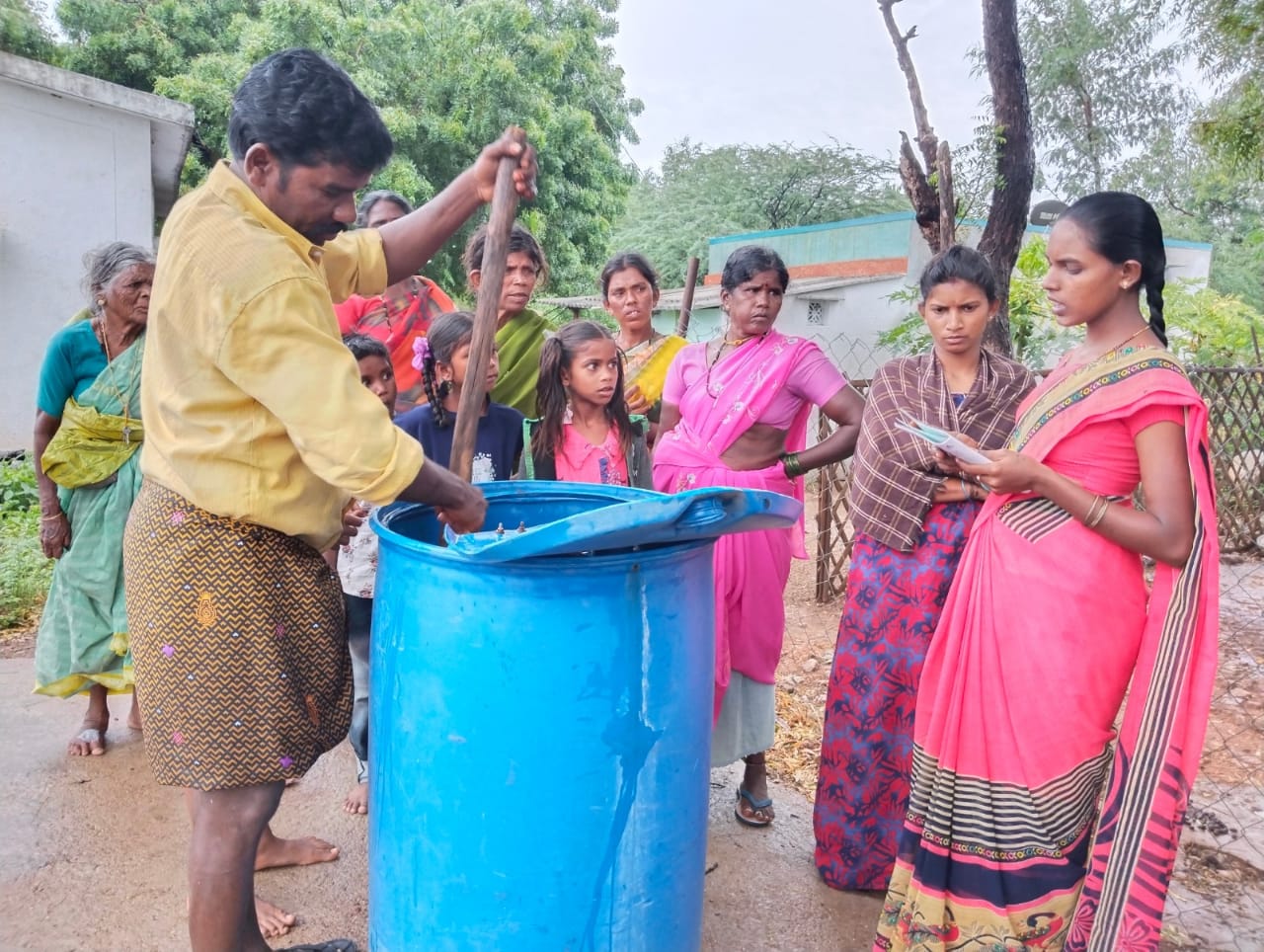
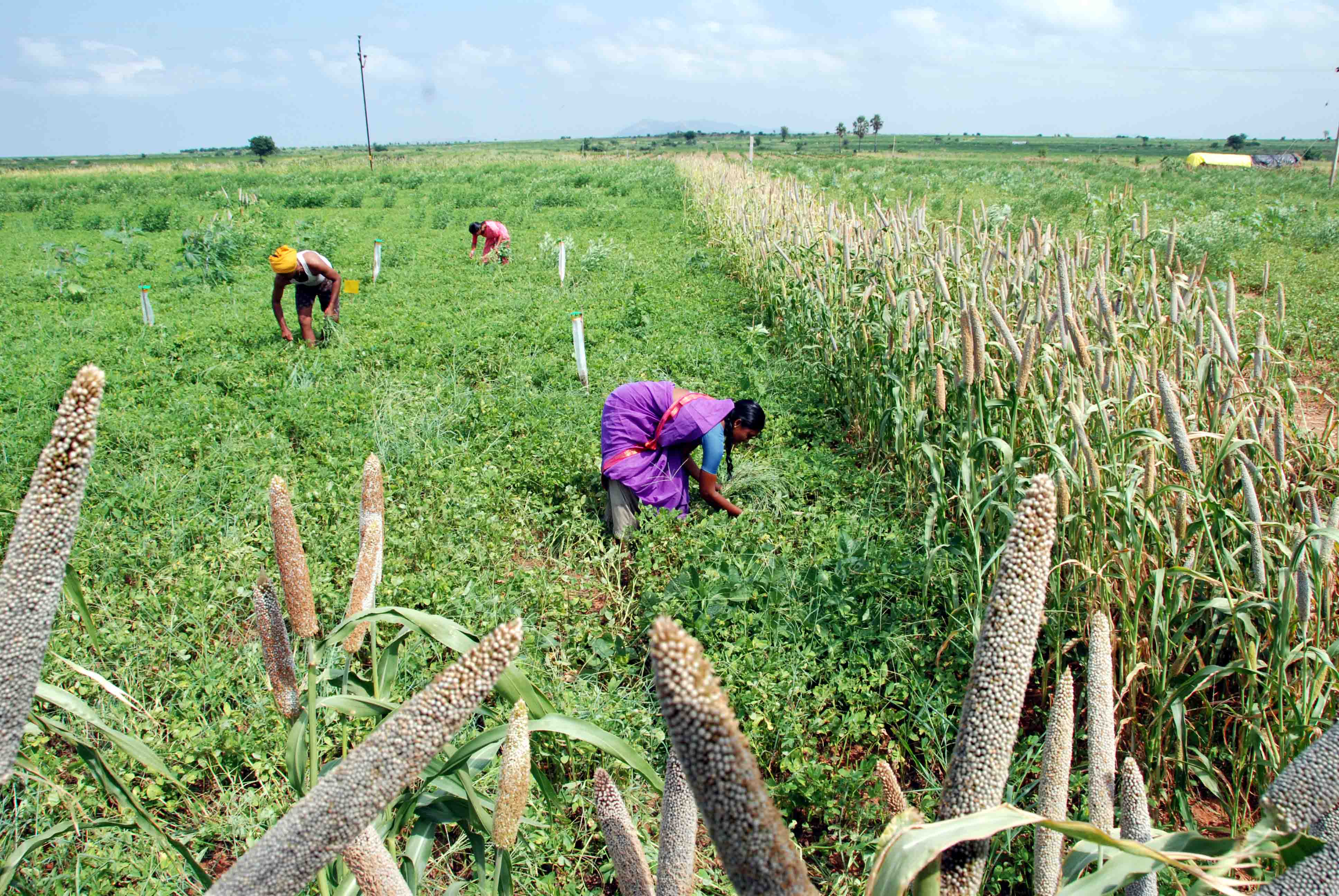
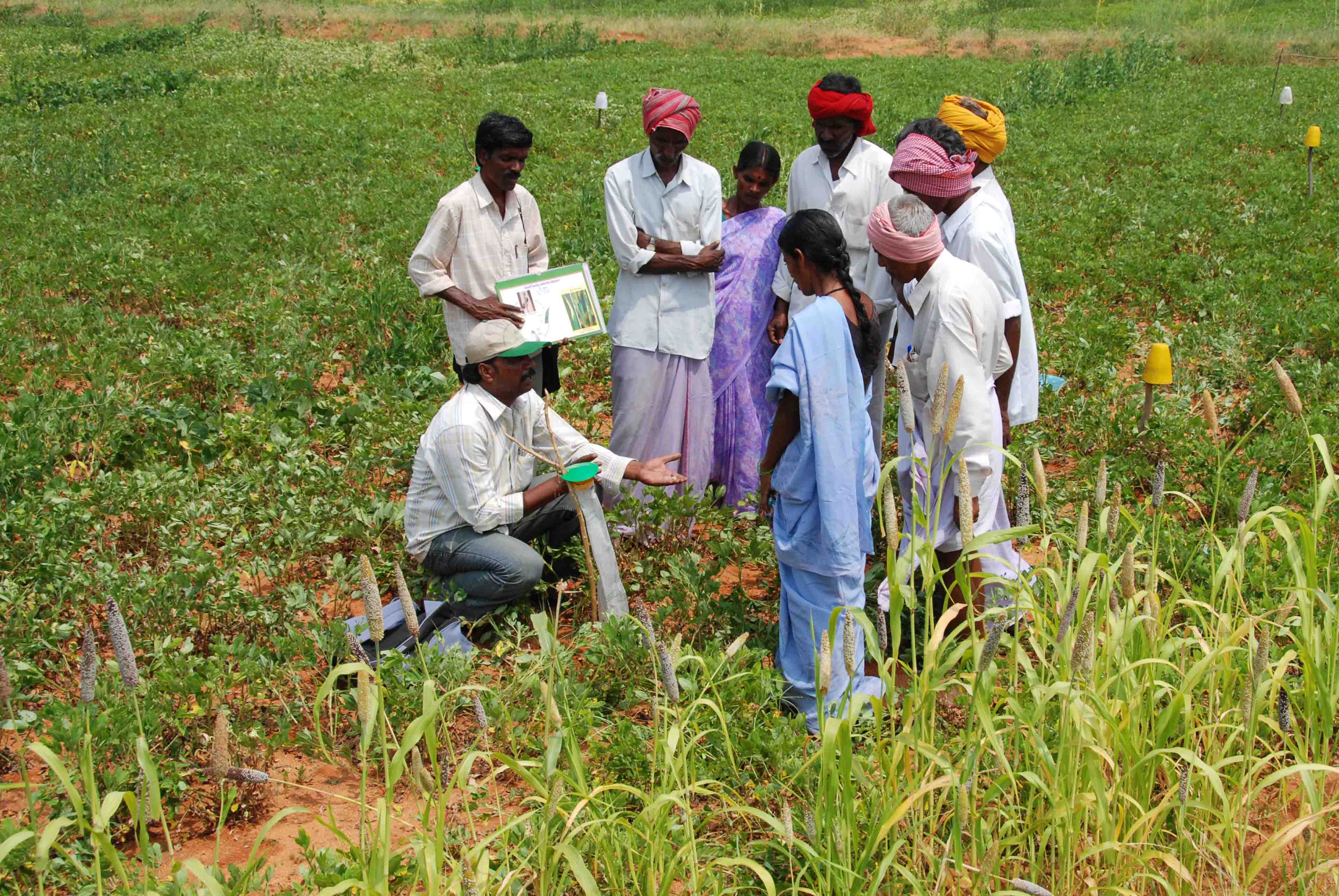

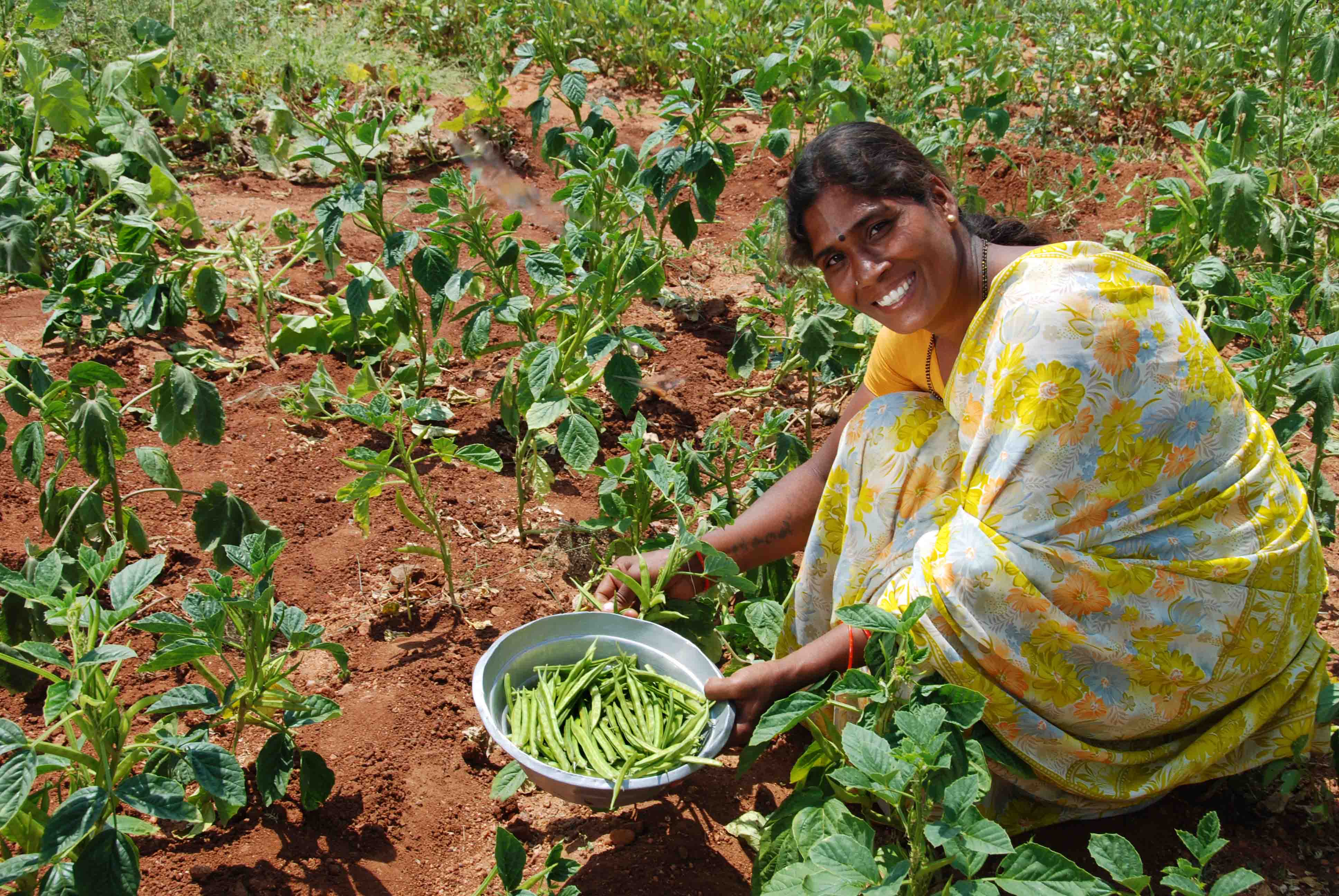
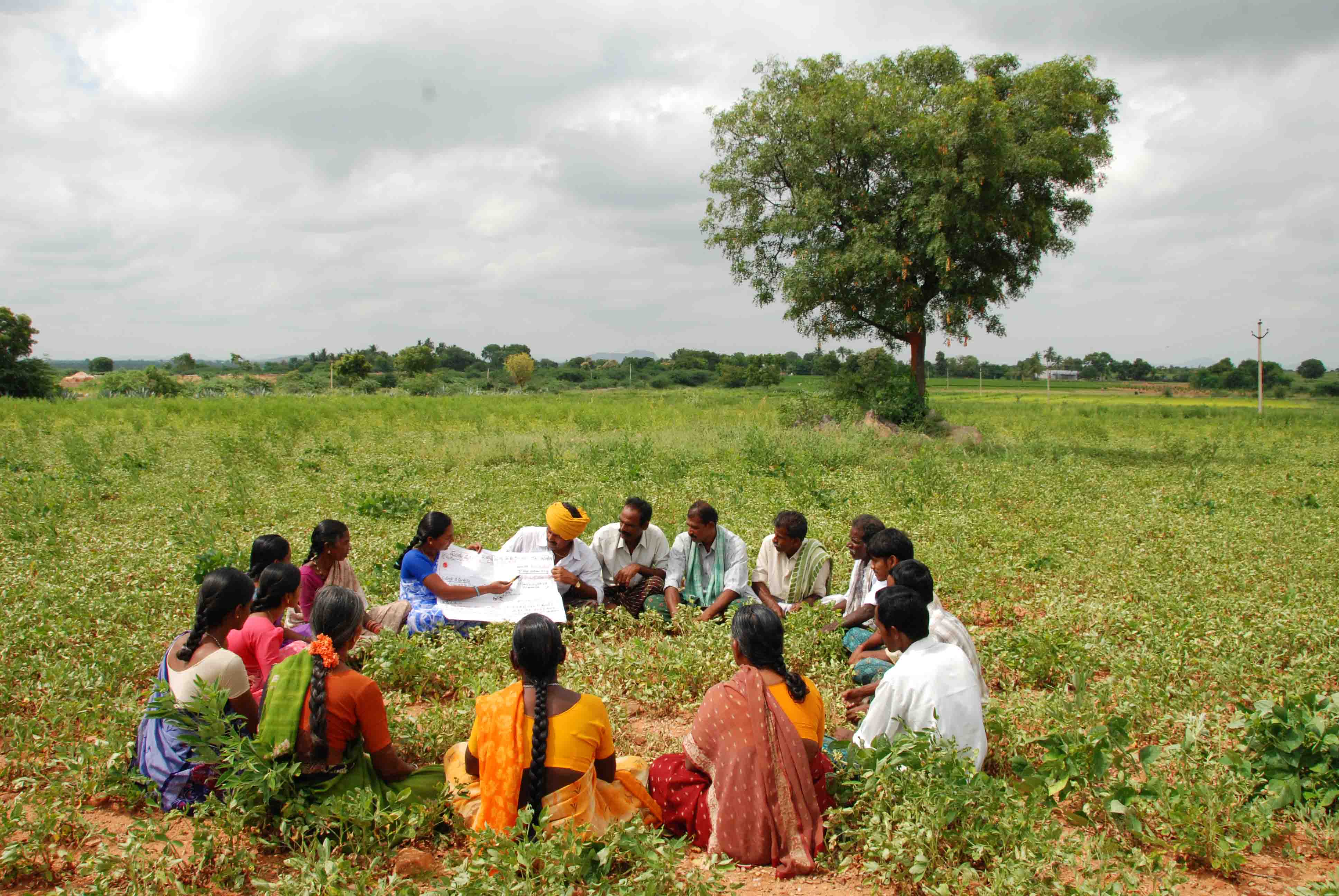
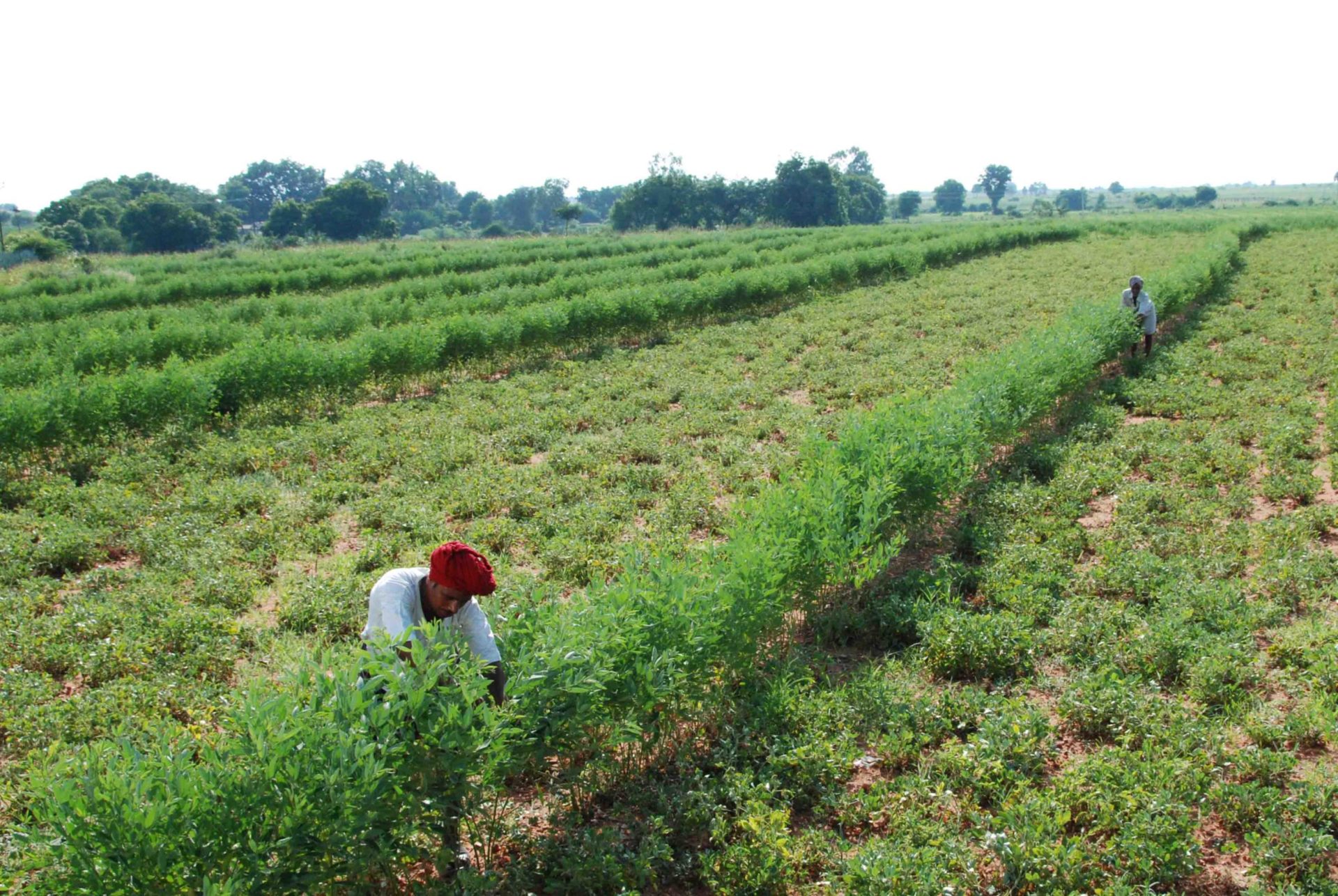
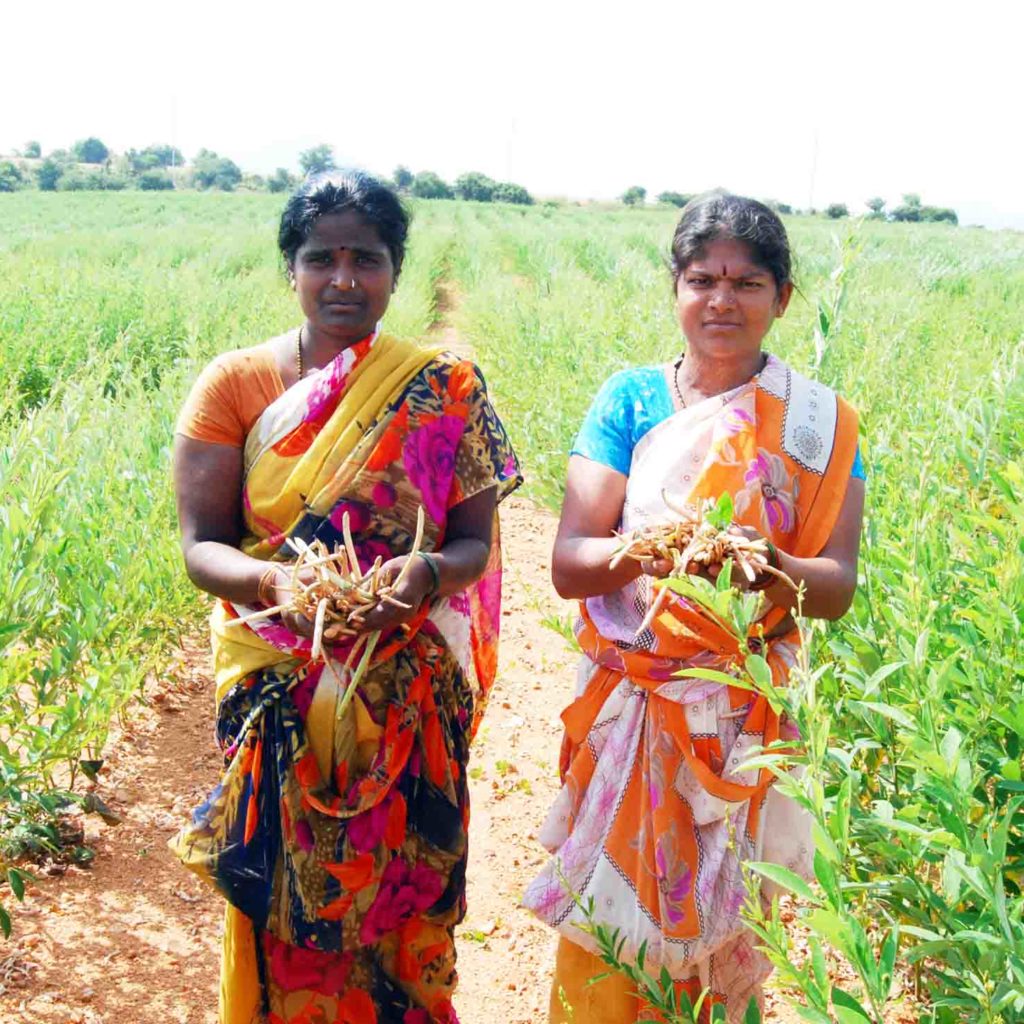
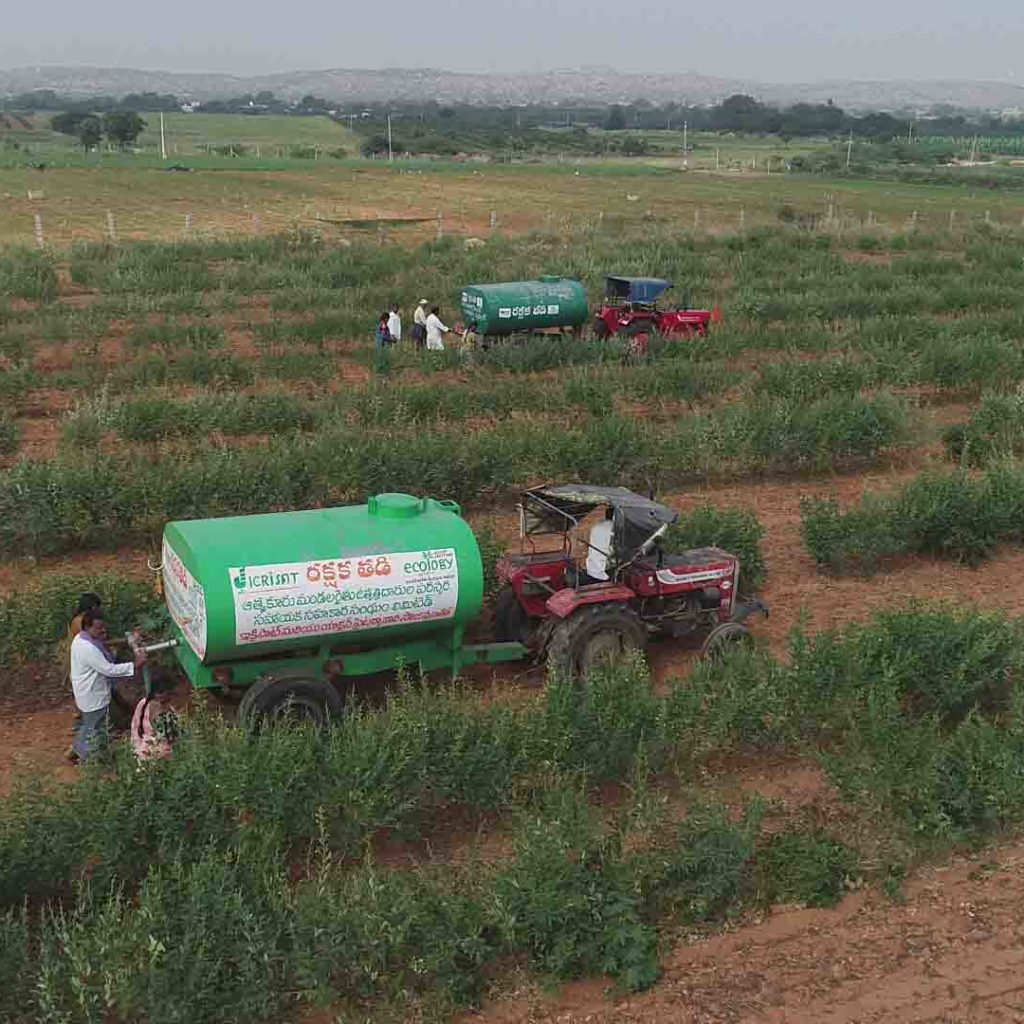

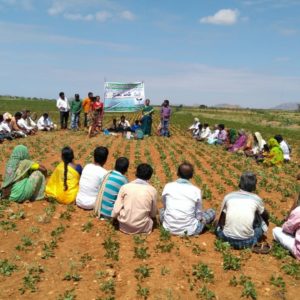
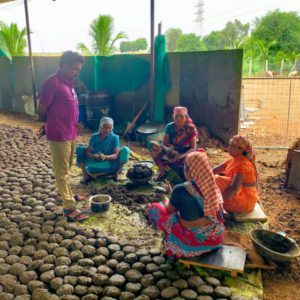

Outreach/ Target Group (No of Families):
|
S N |
Category |
Direct |
Indirect |
Total |
|
1 |
Schedule Caste |
8000 |
7000 |
15000 |
|
2 |
Schedule Tribe |
2000 |
3000 |
5000 |
|
3 |
Other Backward Caste |
13000 |
38000 |
51000 |
|
4 |
Others |
2000 |
12000 |
14000 |
|
Total |
25000 |
60000 |
85000 |
|
|
S N |
Category |
Direct |
Indirect |
Total |
|
1 |
Women Headed Families |
1660 |
3260 |
4920 |
|
2 |
Families with Disabled Persons |
1086 |
1862 |
2948 |
|
3 |
Others 1 |
|||
|
4 |
Others 2 |
|||
|
5 |
Total |
2746 |
5122 |
7868 |
Outreach
Direct Beneficiaries
Indirect Beneficiaries
Geographical target area:
The project area covers 230 villages in the most drought-affected eight contiguous mandals/blocks of Anantapur district. The mandals are 1) Atmakur, 2) Kudair, 3) Kalyanadurg, 4) Beluguppa, 5) Kundurpi, 6) Settur, 7) Dharmavaram and 8) Rapthadu.
Our Project Areas
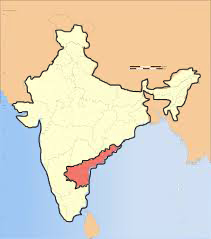
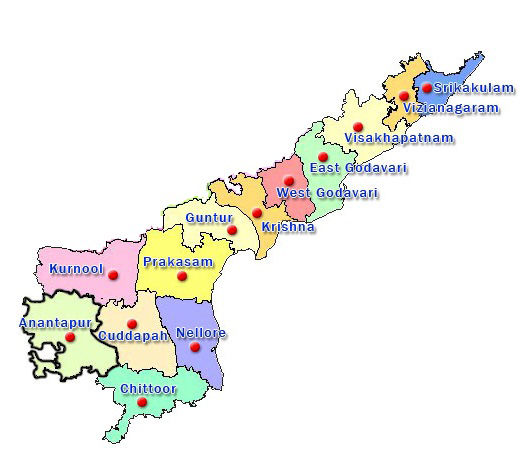
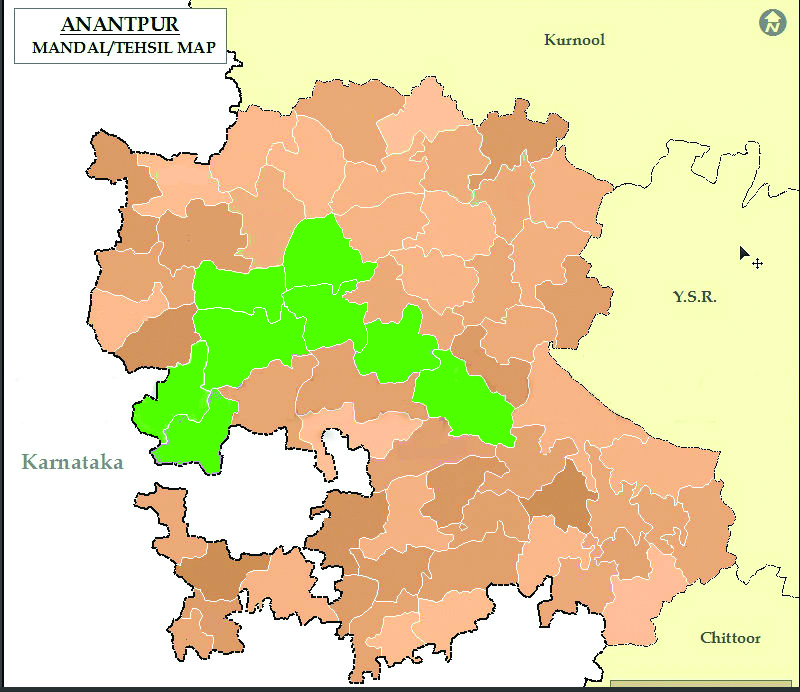

- Kalyandurg
- Beluguppa
- Kudair
- Atmakur
- Rapthadu
- Dharmavaram
- Settur
- Kundurpi
Donor of this Project: BREAD FOR THE WORLD

In the Press
In dry, unreliable weather, Indian farmers restore arid land
https://www.thehindu.com/sci-tech/agriculture/in-dry-unreliable-weather-indian-farmers-restore-arid-land/article66127897.ece






